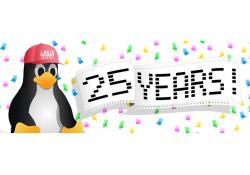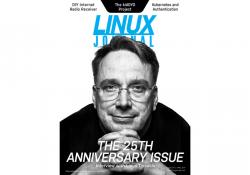A Big Thanks to Our Subscribers

We asked LJ subscribers to write in and tell us about themselves, so we could feature them in our 25th Anniversary Issue as a way to thank them for their loyalty through the years. The response was so overwhelming, we were able to include only a few of them in the issue, but read on to see all of the responses here and to learn more about your fellow readers. We truly enjoyed "meeting" all of you who participated and are humbled by your words of support.
We asked readers to give their name, how long they've been subscribers and why, their favorite LJ memory and their first distro. Note that submissions have been edited for clarity. Also note that if you sent in a message and don't see it here, we apologize in advance for the oversight. And in some cases, we were unable to publish photos that were too small, so if your photo is missing, that's likely the reason.
Guillermo Giménez de Castro (a.k.a. Guigue)
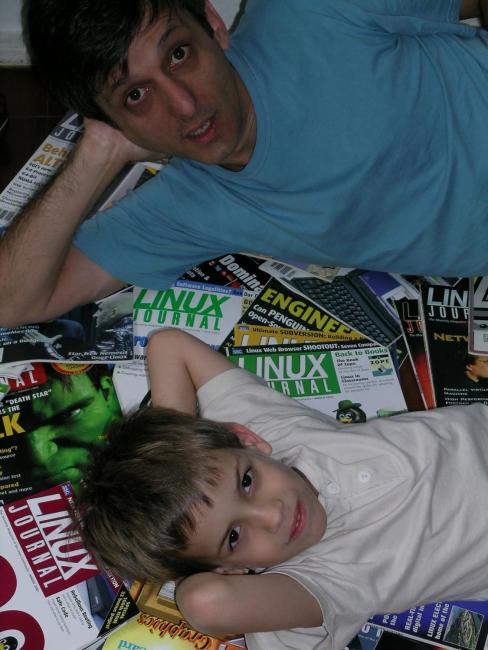
I've been a subscriber since February 1996, regularly. I've never missed a renewal. I subscribe because I don't find anywhere else a place where Open Source, the Bazaar Philosophy, and Linux itself are better advocated. I have to say that every month I receive the new issue is a joy, with the first quick read to see what is new. But probably my best memory is the picture included here. It was taken during a session for the "Picture of the Month" LJ contest in 2004. My wife shot a few dozens of photos and I sent a different one (and won!!). In one picture, my son Manuel appears with me on top of my printed collection. Now he is in his 20s and is a Linux hacker. My first distro was SLS with kernel version 0.99 patch level 12. I hope to send a similar email 25 years from now. Happy Anniversary!
David Barton
My first LJ was the last print issue published. I subscribe because we all need a way to come up with new ideas. Professionally written articles are an excellent source of both ideas and well described ways to implement them. A single good idea is worth far more than a year's subscription. Also, I like to keep up with my favourite OS! My favourite memory is when you came back, and also when my first article came out. My first distribution was probably Slackware around 1997.I manage hosting for 100s of custom software databases, and Linux is secure, fast, robust and easy to administer. I also use Linux because it gives me the same power I have on the server on my desktop.
Michelle Suddreth
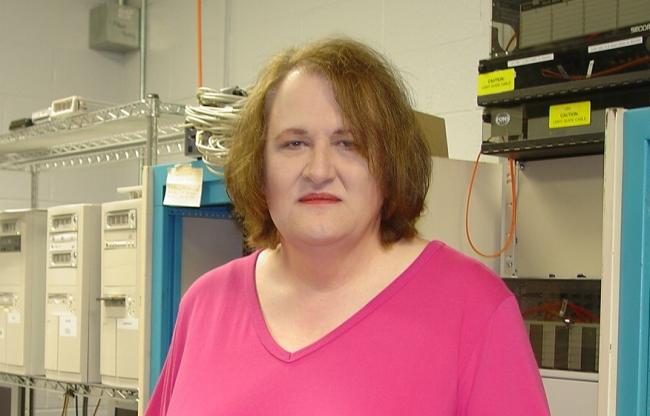
I've been a subscriber for 25 years. Reason for subscribing is to find out about open source software that I can use and learn more about UNIX/Linux itself. At the time, I was setting up the network and internet for a community college. Favorite memory is the multi-part bash article. First distribution used was Yggdrasil. I did experiment earlier with a floppy-based system (maybe a precursor to slack), but it did not have an English keyboard map.
Lee Santon
I live in Spruce Grove, Alberta, Canada, and I'm an old fart—almost 72! I've subscribed since the beginning. I miss the paper magazines (still have most!), but I understand the economics. I enjoy most articles and opinion pieces, and I mostly play with Raspberry Pis these days.
The issue I remember most is the one from a long time ago that featured the new Nokia pad on the cover. Who would have ever guessed where that would have gone!
I started Linux with Slackware, then Red Hat. I tried SUSE, and I have been with Ubuntu for a lone time now. And of course Android. I ran the department email server for years on Red Hat at our Cross Cancer Centre in Edmonton, part of the University of Alberta. Best of luck with your next 25 years.
P.S. I still wear the really cool "Extremist" Tee shirt you sent me a few years back.
Per Asbjørn Jensen
I have had an electronic subscription for Linux Journal for the last 8 years and was regular reader for even longer. I installed my first Linux (Red Hat 5.3) distribution for more than 20 years ago, and I've been a fan ever since. Today both my private and professional OS are Linux (Ubuntu), and I have not had a windows partition for years. LJ is a great way to expand my Linux world and support the community. My favorite LJ "story" was when NSA classified me because I read LJ and learned about Tor and Tails.
Greg Mader

I've been a subscriber since the mid-1990s. I love the point of view of the writers and the staff—there is a clear commitment to the open-source approach. What Linux Journal really is about is connecting people with each other and allowing them to learn technology, but it's also to create community and friendship. My favorite thing about LJ is being asked by others about the Linux Journal magazines sitting around the house. If I leave LJ out for others, they will pick it up intuitively, and become engaged. My first distro: SLACKWARE!
Surya Saha

Thank you for all the wonderful content and for keeping LJ going! I was genuinely geek sad when you announced that LJ was going away. I'm elated to see that it's back and looking strong. I've been a subscriber for 12 years. It's the only tech journal I subscribe to because of its long association with the Open Source and Linux community. I love reading the Letters and "diff -u" sections. It's amazing to see the diverse community of Linux users and LJ readers out there. My first distro was Red Hat 4 (before it was commercial).
Federico Kereki
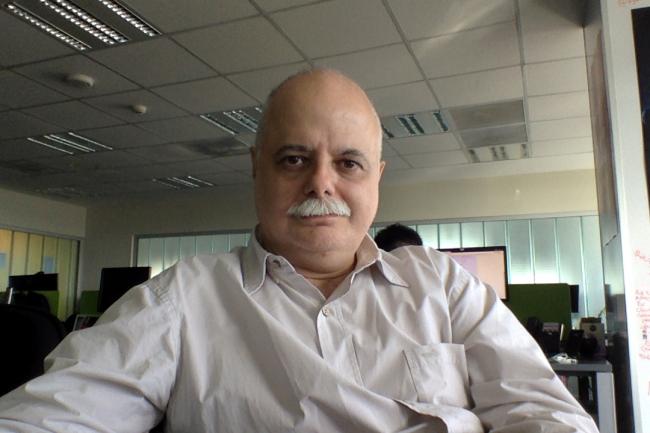
Over the years (starting in 2007), Linux Journal helped me learn more about Linux, and gave me the possibility of sharing my knowledge and experience through more than a dozen articles that I wrote and were published. I feel most proud of these works I did, and I deeply thank the magazine for having provided me this opportunity. I missed the first years of publication, but I hope never to miss future issues!
Johan Nyberg

I've subscribed since issue #1 to keep me updated with the progress of all aspects of Linux. I think my nicest memory is from when I got the very first few issues of LJ, with interviews of Linus and lots of useful information to get the most out of my new computer running Linux. I did my first Linux installation in Jan-Feb 1994. It was a Slackware-based distribution with kernel 0.99. I had to use diskettes and a very slow Internet connection for the installation—very time consuming but fun.
I am an experimental nuclear physicist and professor in physics at Uppsala University in Uppsala, Sweden. My research field is the structure of exotic nuclei. Together with my research collaborators, we perform experiments at different international accelerator laboratories. Our main instruments are the gamma-ray spectrometer AGATA and the neutron detector array NEDA.
It has been very nice to see how Linux, during the last ~20 years, has taken over all (or at least most) of the computer-related issues of my research. We use Linux for example in the FPGAs of our electronics, in the data acquistion and storage systems, for data analysis and simulations in computer clusters and for writing and producing our research results.
I am also using Linux privately. I never had a computer with another OS. Linux rocks!
Neal W.
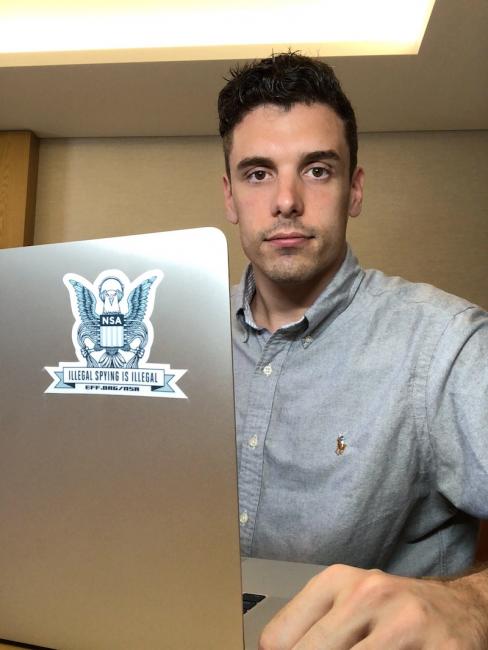
I've subscribed for a few months. "Linux" encompasses a myriad of distributions and approaches to making life better through open source software—so many in fact that it seems impossible to follow completely unless it's your full time job. Having a neatly wrapped, monthly curated journal of stories and explainers arrive at your inbox is both a gift and the kick in the pants many of us non-developers need to keep learning more about something that otherwise can seem quite overwhelming.
Favorite memory: this is pure ego, but I once got my photo published in an issue! I won't tell anyone which one it was though.
My first distro: I called in to Kim Commando as a teenager to ask about her thoughts on open source, and she sent me a copy of Red Hat. Since then I'm using Tails OS and Qubes OS primarily and am a fan of the Debian philosophy.
Aleksandar MIlovac
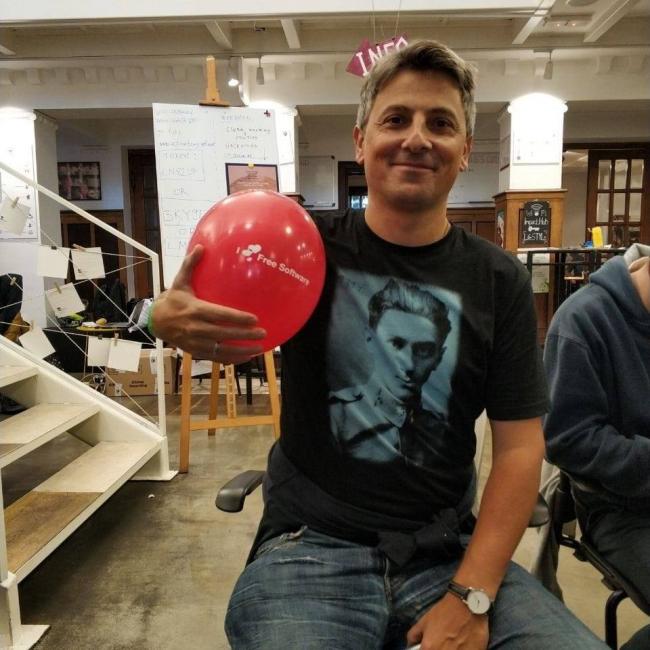
I've subscribed for 15 years, becuase it was fun to read. I love Linux. My favorite LJ memory is reading LJ (printed issues) in WC 10+ years ago. My first distro was Red Hat 5.2 in April 1999. My first installation "failed" because I had no idea who is "root".
Georg Thoma

I've been a subscriber since May 2014. I want to support the publication as I am convinced of the positive effect the journal has on the Linux community. My first distribution was Slackware around 1998. I bought a bunch of CDs in a bookstore at the university.
Jayson Helseth
I have been a subscriber for about 6 years, and a developer for over 10 years. I subscribed to Linux Journal because it was my favorite of the Linux publications that existed. Even though they say you should never judge a book by its cover, I was drawn to the covers of the Linux Journal publications. My favorite article so far is when Kyle Rankin talked about using the Odroid for a home NAS solution. The first distribution that I used was Mandrake 9.x. I received a copy from a friend, and later decided to buy it with the Mandrake book as a guide.
Tom McNeely

I've been a subscriber since approximately 2006, because I enjoy reading it, I learn useful things, and to support Linux journalism. In 1993, I wanted to go to a Grateful Dead concert in Oregon. I lived a little north of Seattle at the time, and I saw on a Usenet newsgroup that someone by the name of Phil Hughes in Seattle had tickets for sale. Phil told me where his truck was parked and left the tickets in the truck bed; on my way to Oregon, I picked them up and left payment in their place. I'm pretty sure this was the Phil Hughes who a short while later co-founded Linux Journal! Too bad I didn't meet him in person. My first distro was Slackware, from late 1993 until 2010. Thanks, and I'm so glad Linux Journal lives!
Chester A. Wright, Jr.

I've subscribed since 1995 (that the earliest paper copy I can find at the moment) to support the community and to learn what things others are using. You never know when the next inspiration will hit you! My first distro was SLS, 1993 (not Slackware). I had to download and convert 20 3.5" disk images using an internet-connected MAC because I didn't have internet at home.
These days, I teach a lab at a local university where freshman engineering students learn to build and administer Linux virtual machines. This exposure is a must-have for their career.
William (Bill) Bastick
I can't even remember when I started subscribing. However, I can remember exactly when I discovered Linux, as a "mature age starter", and that was 2005. From then, until the Journal became available in digital format, I purchased the magazine from my local news agent—I'm somewhat behind behind the times due to the tyranny of distance (I live in Tasmania). My first ever Linux experence was Damn Small Linux, a free CD with another publication. I was hooked, and with a bit of advice from a Linux-savvy friend, I partitioned my Win XP desktop and installed Mandriva (Free Edition). Whilst I no longer use that old desktop, it still works and so to does Mandriva. My wife grew to love it, although she is now an Ununtu laptop user. I became involved a few years later with Linux Conference Australia, which was held here in Hobart in 2009. I had the chance to meet and chat with Linus Torvolds at the time. He seemed to be enjoying he stay down here, especially the scuba diving! I am now 72, a mainly self-taught Linux user who has been spreading the word to friends and family with resonable success. After some years of distro hopping, I've settled on Ubuntu and its variants (Unity 16.04 and XFCE 18.04). So glad Linux Journal came back stronger than ever. Congratulations on the 25-year milestone and best wishes in the years ahead. I will be with you for long haul or at least as much as the "age factor allows".
Jim Peterson
I've subscribed 11-ish years, because knowledge is power! Favorite LJ memory is meeting Shawn Powers at LinuxCon 2009 in Portland, Oregon. My first distro was some weird Chinese-produced version that came with the off-brand laptop I'd bought with no OS installed. It didn't really work as there was no driver support, but it was my first foray. I picked up Suse at Best Buy soon after that, with much better results.
David A. Lane
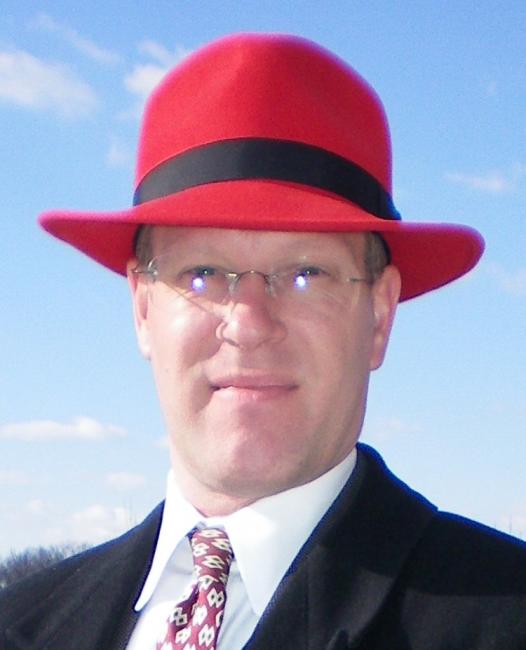
I've subscribed for more than a decade to keep abreast of the comings and goings in Linux and FOSS software. My favorite LJ memory is the January 2010 issue, which I got to guest edit. First distro was Slackware back in 1995.
Pedro Fernandes

I've subscribed since 2002 (I have the CD-Rom archive all the way to 1994) and have memories of magazines from 1998. I subscribe because it is part of a community that helps drive Linux adoption and improvements. Linux has been key for my company operation and development. My favorite LJ memory is an article that taught me how to set up a Linux server with Samba so that my whole company could generate PDFs by printing to a shared virtual post script printer. Saved us tons of money in Acrobat licenses many years ago. Thank you! First distro was Red Hat 5.2.
In the photo I'm wearing what is honestly one of my favorite t-shirts—a Linux Journal t-shirt—"Geek by nature. Linux by choice." I got it many years ago but still wear it regularly.
Ron Smith
I've been a subscriber since Jan 2009, although a reader since around 2005. The first distro I used was Ubuntu. It was a very early version that came on an ancient Dell desktop that I acquired while doing research for my doctorate in educational technology from Pepperdine University. Here is what I wrote for my comps essay: William of Ockham was a 14th-century logician and Franciscan friar in England.
He came up with the lex parsimoniae, or the law of succinctness, which says entities should not be multiplied beyond necessity. Occam's razor, as it came to be known, states that when given two equally valid explanations for a phenomenon, one should embrace the less complicated. Or, as architect Mies van der Rohe famously said, "Less is more."
At about the same time, on the other side of Europe, a bishop representing Pope Benedict IX was sent to find the best painters in Italy. There was to be an important commission offered in The Vatican, and the Pope wanted the only very best artist to do it. The bishop told Giotto, perhaps the first of the Renaissance painters, famous for his skill and his tendency to be a hermit, that the Pope wanted to make use of his services and asked him for a drawing which he could send to his holiness. At this Giotto took a sheet of paper and a brush dipped in red paint, and with a twist of his hand drew such a perfect circle that it was a marvel to see. Then, with a smile, he said to the bishop, "There's your drawing."
As if he were being ridiculed, the bishop replied, "Is this the only drawing I'm to have?" "It's more than enough," answered Giotto. "Send it along and you'll see whether it's understood or not." What a perfect demonstration of Occam's razor. Giotto got the job.
Fast-forward a few centuries. I was having a conversation with a friend some years ago before personal computers were so ubiquitous. We were discussing the merits of a new typewriter that was touted by its manufacturer as a "word processor".
It was very expensive, more than a basic PC costs today, and we wondered aloud if it was worth it.
Then he said, "You know, a pencil is a word processor, it's just slower than some others."
I've come back to that conversation many times, in many situations.
Sometimes we get so wrapped up in names and definitions that we forget that what is at the real heart of the matter is very simple. It was Occam's razor all over again. Last year, I paid a visit to a friend of mine, the principal of a local middle school, to show him some of my experiments with Linux. I brought a computer, a flat screen monitor, a keyboard, and a mouse, and set up a temporary office in his office. For years I had been searching for a better operating system for myself, and possibly for use at school. I had long ago given up on Windows and had been recently concentrating on the Apple OS. It still left me with a feeling of powerlessness, because the developers only allow users to do a limited number of things, and those only with permission.
I wanted something much more flexible. When researching different open source answers, I was looking for 1) ease of operation and administration, 2) availability of applications, and 3) community support for troubleshooting and expansion. I turned on the box, an ancient (five years old) Dell PC that I had bought for next to nothing. It was a dirty beige in color, and it made lots of, well, unique noises. As the computer roared to life, a brandspanking new version of Linux lit up the screen. It looked very modern, with a beautiful splash screen and icons for the latest and fastest applications decorating the desktop. I started up some of the programs.
This computer was lightening fast! It had everything one could want in a brand new computer. I explained to my friend that this was open source software and that it was free.
Patrick Op de Beeck
In the beginning, I bought Linux Journal as single copies at the newsstand and then subscribed later. At first I subscribed to see other uses of Linux and to get tips and news about the Linux OS and community. My favorite issue is the one with the Titanic on the front page and the story around it. My first distribution was the Linus "distribution" actually ;-) We were pioneers even before a "distribution" was available. After that I tried Yggdrasil, but I never got it working on an ordinary PC. Then SLS, Slackware until we got S.u.S.E 4.0, which worked out of the box and stayed my favorite until it was taken over by WordPerfect. Later on I tried several others: Mandriva, Red Hat (typical US did not work out of the box on other configurations), and now Gentoo is my favorite distro. Gentoo is maybe difficult to start with, but it's very rewarding during the lifetime of your computer, never do a re-install but always upgrade. It's VERY VERY fast, but you need to follow the manual exactly. You also know better what is inside the "box", and it gives you the choice of what you want. It does not say, "Oh we stopped using this window manager, so you must change to xx", or "Sorry, we have only limited applications that are supported." Or, "You have to pay xxx for that." If the software is not available on Gentoo, then it is rubbish or too new and not well developed for use by non-developers. Given time, every good addition to Linux software becomes available on Gentoo.
As chairman of the Antwerp Linux User Group since 1990, we continue to support the Linux OS and watch the evolution. I am personally not happy with Microsoft in the Linux Foundation, since the objective of that company stands 180° opposite of what we want with Linux: namely an open-source OS and applications, not necessarily totally free—charging for maintenance we love—but not for the source.
On 29 October 1993, Linus Torvalds presented his first really public presentation in the world, open to the public and orgainzed by the VUB (free University of Brussels), The Antwerp Linux User Group and the G.U.U.G., and he adapted there the slogan from me "Linux goes for World Domination". Previously he had only done one presentation in the U.S. for a limited audience of digital users organized by John Hall.
You can reach the Antwerp Linux User Group at tuxedo93@gmail.com.
Robert Batten

I've been a subscriber since 2010 to expand my knowledge of Linux, learn new ways of using my computer and keep up to date on various issues that are going on in the world of Linux. My favorite memory is going to Books-A-Million and buying my first copy of Linux Journal back in 2009. My first distribution was Ubuntu 8.04. My professor introduced me to the world of Linux, and it has grown since then.
Aleksey Tsalolikhin

I've been a subscriber for ages, because I love it! Thank you so much for saving Linux Journal and keeping it going. Favorite memory is getting the Linux Journal issue (paper copy) with my feature article in it and my name on the front cover in 2011. I felt like such a pro! I'm pretty sure my first distro was Debian. The startup I was working for ran out of funding (about 2000), and we saved the day by scrounging up a bunch of old desktops from a sister company and installing Debian Linux on them and putting together a cluster to serve the company's JSP apps with open-source software (Apache httpd and Tomcat). We used lvs (Linux Virtual Server) for the load balancer.
Jozo (Joe) Capkun
I started subscribing around 1997. I bought my first Archive CD-ROM in 2010, because my shelves were buckling from the weight of the back issues. My favorite LJ memory is the interview with Linus in 1994. I loved reading about what he went through to create Linux and where he thought Linux might go. First distro was Slackware 1.1. I downloaded the diskette images using a high-speed 14.4k modem.
The computer world, the whole world, has changed since the first time I read Linus's post in comp.minix in Oct 1991 announcing he had a version of Linux ready for others to play with. Thank you, folks at Linux Journal, for being there for the journey and adventure thus far. To the next 25 years!
Adam Sher
I've been a subscriber for one year to support the fantastic work LJ does promoting Linux and open source. Favorite memory is when Linux Journal was reborn, like a phoenix from the fire! First distro was Mandrake Linux 6. Thanks for all the amazing work you do!
Andrew W. Anderson
I've subscribed since the late 90s. There was a brief time when I was deployed where I was focused on other things, and my subscription lapsed for a year or so. Linux Journal is awesome. It appeals to a broad audience that has an interest in Linux, and it is, in most cases, well presented and understandable. I just love receiving the newest issue and poring over all the new content. I particularly enjoy the new products and new projects sections. I also love the issues that have focused on cool projects like the Oswald Project issue from a few years ago. Red Hat 5.0 was my first distro during my undergrad studies.
Lars Højmose Kristense
I have been a frequent reader of Linux Journal since 1994. In the beginning, Linux was just a disturbing hobby. Today Linux is a natural part of the products we develop at Rohde & Schwarz. My first Linux installation was Slackware in 1993. I have used lots of distributions. I probably learned the most about the internals when using and tweaking Gentoo for some years starting in 2003. Today Linux Mint is keeping life in my Asus laptop from 2012 quite well. I am also a happy Raspberry Pi owner and user. I was a happy user of the true Linux phone Nokia N900 for several years inspired by Linux Journal. This phone is definitely my favorite LJ memory.
Linux Journal has been entertaining, inspiring and educating through the years. It has been interesting to read detailed command-line commands with good explanations, about the chaotic development process in the Linux community and about new software and products. It is not always pleasant to read about security, but Linux Journal has now and then awakened my attention. Please continue the good work.
Al Audet
I've subscribed for 18–20years, not sure. I enjoy it, but it is partly nostalgic for me as well. My favorite memory was back in the early 2000s when I used an LJ article to implement a remote backup solution for some of our satellite offices that had faulty tapes drives. The article showed how to use Samba to tarball the files in the remote site and copy them back to our local server in the early morning hours. We had no budget to buy equipment, and I was able to do this with old 486s at the time. There were solutions for real-world problems, and I couldn't get enough of it back then. My first distro was Slackware in 1997.
Another good memory was actually writing an article on Raspi-Sump in the 1996 Embedded issue. It felt great to contribute back after benefiting all those years. I even had people reach out to thank me for sharing the program. It's still used and maintained on GitHub under the MIT License. Cheers, and keep up the good work.
Moisés Herná Duarte
I've been a subscriber for 20 years. I used to read Linux Journal because when I started using Linux, your magazine was the best one. And it is still. One of my favorite LJ memories is when you published the article about building a cluster using the Beowulf How To. We won fourth place in a National Competition proposing that cluster around 2002. The first distribution I ever used was Slackware, installed from diskettes and sharing a 200MB HD with Windows. Thanks a lot for letting me be part of your history.
Hugo Ortega Hernandez
I've subscribed for about seven years. I love Linux and I love to learn. Maybe the most valuable memories are those moments when I learned something new about a topic I already knew well. The most recent example was the article "Understanding Bash: Elements of Programming" in the October 2018 issue. This kind of deep knowledge is the fuel for me to keep using Linux both at work and home. First distro was Red Hat in 1998.
debansu saha

I've been a subscriber since 2001 (or earlier). Linux Journal brings carefully selected articles from good authors on topics of importance and interest every month. Nearly 80% of the content of every issue is of my interest—that's the primary reason I subscribe to it. In one of my old workplaces, which was a state-run organization in Kolkata, India, we were running Free Software solutions all around. There was a requirement to introduce a library management software for our library. LJ did an article on Koha around that time. We adopted it and that was a grand success.
Please continue the great work. LJ has become part of life. It was bad to miss it for couple of months.
Lou Lipnickey

I've been a subscriber for 20 years to stay current and learn new stuff with Linux and related technologies. Favorite memory is the "They Said It" column and Doc Searls' end-of-year piece on the 2016 election. My first distro was Red Hat (forking to Fedora).
A thought: recent events show that America needs to READ more, whether it's Linux Journal, Scientific American or the Wall Street Journal. Basic education with an emphasis on reading is the great enabler and compass.
Stefano Canepa
I cannot remember how long I've subscribed—it was your second or third year. I had no credit card, and I was sending checks in dollars from Italy by post. It was a really painful operation to go to the bank to get the check, go to the post office, send the check and wait for the notification that you got the check. I'm a Linux user, software engineer, developer and free software fanatic. I have too many memories. It was really a pleasure to get my copy in the post. Most of the time it was in bad shape, but I was reading it cover to cover the day it arrived. Now it's not the same, even if I still love to read LJ. My first distro ws Slackware loaded from floppy downloaded at my university, because my modem was too slow.
Michael Yam

I've been a subscriber for about 10 years. I subscribe to Linux Journal because I like monthly periodicals that are well-edited and serve as a guide to the future. Sure, I can search for random information on the internet, and that's useful in its own way. But I've also seen my favorite publications disappear, including PC Week, PC Magazine, DDJ and TUX, and I'm glad Linux Journal is still around. I also read Linux Journal for work. My motto is: I use Linux at work, Mac at home, and Windows only when I must. My first distro was Sony's Linux for the PlayStation 2. Hey, don't we all like to mix fun with work?
Jose
I have been a subscriber for two years now, and previously, I was subscriber of other magazines, but they died...RIP. My first distro was SUSE, then Debian, but in the end, I am into Linux Mint. I find it quite comfortable. I started when you still were booting from external 1.4 mb disks. It took me at least two hours to get a fully working boot! It's so easy now, with so many options to select correctly before for everything works the first time. My favorite memory: I love SSH, and then I think I discovered the mosh option via your magazine, but I am not sure, that is a bit extra but really nice. I love that sensation when from just typing a bit of text you get that power. Yes, I tend to abuse the root user, but I am trying to quit that.
Marcelo Sá
I've been a subscriber since 2009, because I like the articles very much and feel like a Linux Journal community member. My favorite LJ memory was the notice, in 2017, that it was not the end of LJ. Slackware 3.5 was my first distro in July, 1998.
Alexander Bialowas

I've subscribed since number 37, and I think my first one was number 32. I was delighted. I subscribed because besides LWN, it was here the only international magazine for Linux users. My first distro for money was S.u.S.E, but I think in 1993, it was Slackware.
I liked Linux from the beginning. First I was a Windows Programmer, but after that long time on Windows, it has been enlightening to work with Linux. At first I worked on the command interface only, with a lot of man page reading. On my job, doing some stuff in automatic control, it has been a pleasure to work with Linux. I was using Linux even as a desktop from the very beginning, even when it was not common in those days. Well in all my working years with Linux and Linux Journal, these are both some old friends to come along with the times&mash;THAT is consistency! There are a lot of interesting stories, but as simple as it is, I use it every day over several years.
Professor Processor
I have been an avid reader of Linux Journal since about 1996 and a subscriber since 2005. Once the living room began to fill up with the paper-based magazines, I was so happy that LJ came out with the digital subscription edition, as that was a big relief freeing up much-needed space for my computers.
If it weren't for a co-worker at an insurance company where I worked who introduced me and continued to drill in the benefits of Linux back in the 1990s and insisted that I drop the "Red Pill", I don't think I would have had such a broad knowledge of computing and programming (thanks Joe).
In contrast, I had always been a Microsoft user since DOS 3.1, back when we had to load the OS from floppy disks in the late 1980s. Back then with a staggering 640Kb running on top of my 8086/88 hardware, I thought I was on top of the world after migrating from an Atari 520 68K Motorola CPU. However, after being introduced to Linux in the 1990s and installing Red Hat Linux 5.0 and acquiring two Sun Sparc "RISC" workstations, my mind was blown as the rabbit hole appeared as a bottomless pit.
I subscribe to Linux Journal, because since I was first introduced to LJ some 23 years ago, it is the one publication, IMO, that has remained true to the Free and Open Source Software movement that enlightens their readers from month to month with fresh information and endless possibilities of what one may achieve and build upon without proprietary software stagnation and financial barriers. Dream It, Download It, Build It.
To no end have I personally provided clients with solutions to their business needs, from articles and ideas submitted through the publication, and to this day, I voraciously seek from month to month new ideas and information. On the first of every month, I eagerly check my email and the LJ site for a new issue like a child waiting for a toy store to open.
Moreover, to me, it was a very sad day when LJ announced that they would no longer print their publication. All of my peers thought someone had passed away, and boy did it feel like it after all those years. But that all changed after a month or two when they fired back up the presses. They were back and as strong as ever. To me, that was the greatest moment in LJ history, and as long as you guys are around, you'll have a loyal subscriber, and I hope that LJ will be around for generations to come.
I can't thank you guys enough for the support and the many projects I have completed with the assistance and reading of LJ. One of my favorites is the June 2013 issue's "Prospecting for Ones and Zeros". Forget about pouring gasoline on fire, this was the nuke! Excellent work guys, don't stop!
Jack Wilson
I've been a subscriber since around issue #4. It keeps me informed on what the cool kids are up to. My favorite LJ memory is attending a mini-Linux conference, which was embedded into a UNIX Conference in Washington DC. That is where I found out about Linux Journal and subscribed as soon as I got home. My first distro: I was playing around with Minix when I first saw Linus' post about Linux 0.12. My first real distribution was Slackware.
Norman H. Azadian
I've been a subscriber since Day One. My first distro was a stack of floppies we downloaded from somewhere, way before 1.0. My first commercial distro was Red Hat.
Bob Johnson
I began subscribing March 12, 1996, according to my accounting program. I wire-wrapped my own 6800 computer in high school in 1978, wrote LISP and Fortran programs on punch cards for a Cyber mainframe at USC, worked as an intern running a company's PDP-11/70 (booted with paper tape) during the summers, and owned TRS-80 and Commodore computers and every generation of PC since the original 8088. I was first introduced to UNIX and USENET on an NCR Tower (68020-based) owned by a former employer, and later via Sun and SGI workstations. By 1996, I was already transitioning from Windows to Linux, as I was always a low-level guy at heart (embedded hardware/software engineer), and Microsoft had gone too closed. Plus, I saw the writing on the wall by that time with USENET having morphed into the internet and TCP/IP and Open Systems becoming the future, not NETBIOS and proprietary applications.
My first Linux OS experimentation was dual-booting to Slackware back somewhere in the mid-90s. I worked with Debian for a while, and by 2000, my primary boot OS was Red Hat, and I was running Windows in a VMware VM. In 2003, I moved to Gentoo (back when it had to be brought up from a stage one install), and I've been using Gentoo ever since. I just re-compiled over a dozen or so workstation upgrades over the years. I've also booted a number of embedded Linux distributions over the years, cross-compiled on my Gentoo workstation. The only remnants I have of Windows are VM snapshots of my old systems (all the way back to my first DOS PC and up to Windows 2000). Thanks to Linux and the fine open-source emulators, I even have archives of all my old TRS-80 and Commodore VIC-20 and C64 programs, spreadsheets and text documents that I wrote in college nearly 40 years ago. I can still run those applications and read those files today, thanks to the hard work of Linux developers.
I forget when I first saw Linux Journal on the local magazine rack. It was back in the later days of Computer Shopper and BYTE! Magazine. I had already been running Linux for a while by that point, but was surprised to find it had a fan base large enough to justify a magazine. I subscribed instantly of course, and I have maintained that subscription for the last 23 years, through the digital transition and the latest reorganization. I don't have a favorite LJ memory; I like all of it. Zack Brown's "diff -u" is one I never miss to keep up with what's going on with the kernel, along with Doc Searls' opinions (now editorials) on the continuing evolution of Open Source. The most valuable aspect of Linux Journal for me is that it covers the wide gamut of activities that Linux now encompasses, from small embedded IoT systems to smartphones to cloud-based containers to the world's fastest supercomputers. I've been using UNIX shells for three decades, but I still find useful pointers in Dave Taylor's articles. Most of my coding is in C/C++, but I like keeping up with what's happening on the language front as well. I also enjoy finding articles about programs I've never heard of before, particularly science and math applications that I never realized were already waiting for me to simply "emerge" onto my Gentoo system. The breadth of the Linux ecosystem these days is truly fantastic. Anyway, congratulations on 25 years, and keep up the good work!
Jeff Bakst
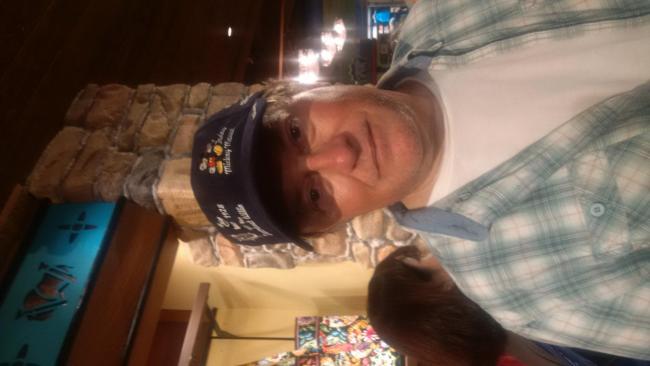
I've been a subscriber for 5+ years. My first distro was Slackware and building the kernel from scratch on the weekends.
Harjit S Mavi
.jpg)
I've subscribed since 2007. I subscribed while I was working at the University of Melbourne, Australia. Later I moved to Canada and resumed membership. I subscribe because I was a Linux system administrator most of my professional life. My favorite memory was When I received my first copy of Linux journal in Melbourne, Australia. I cannot recall my first distro.
Keith Harasyn

I've been a Linux Journal subscriber since about 2011. I really love the articles, especially the trouble-shooting stories Kyle Rankin writes. I also enjoy Doc Searls exploring the new frontier of the digital era. I still have copies the paper magazine that I periodically skim through and find an interesting piece of free software to try or idea to test. The new digital copy is full of useful information—I usually don't even get through the whole issue before the next one comes out, so the past issue ISO offer to subscribers was much appreciated. Keep up the good work. I included a pic of a family trip to Yellowstone in 2018 that my wife took (two of my three sons are in the pic—I'm on the right). PS. I kept a trip journal on my Acer - Aspire One Ubuntu machine (runs great), which replaced an awful Windows 7 Starter OS.
Nicola De Filippo
This January is my ten-year anniversary as a subscriber. I subscribe to get news about kernel and user/developer topics. I always read the kernel article "diff -u" first. My first distro was Slackware, and it was 1995, but I don't remember the version. I love Linux on the desktop and mobile (I'm a Sailfish OS user).
Tomas Kuchta
I subscribed when LJ started to offer a digital subscription in 2005 or 2006-ish, I think. I subscribe for three principle reasons, each equally important: 1. Fantastic and in-depth technical articles. 2. LJ went digital, so I could get it on time and at reasonable cost. 3. I wanted to support this fantastic free software resource. My favorite thing about LJ was when I could subscribe to the digital edition, and all the fantastic enterprise Linux infrastructure and web/dev technical articles. My first distro was Suse Linux 5.x or 6.0 in 1998. I used SunOs/Solaris before. I am an engineer, developer, sysadmin and open source advocate. My interests are in IC design and test, solving engineering problems, automation, development, data processing, analysis and visualization, web technologies and devops. I use Linux exclusively—both personally and for work since it displaced UNIX in engineering and scientific computing in late 1990s. I cannot imagine the world without UNIX/Linux/GNU, free software giants like Richard Stallman, Linus Torvalds and countless others inspiring us and contributing to free software and computing. Climbing on their shoulders, we enjoy free computing, learning and contributing to a better and sustainable future. If I could have my LJ wish come true—please use thicker fonts in your PDFs. It it way too thin (low contrast) to read, even magnified on mobile and laptop screens.
David Rapp
I am a gray beard. I graduated college in 1967 with a degree in Mechanical Engineering. My formal introduction to computers was when I took a Fortran IV programming class in college in 1965. I have been using Linux since the days when one had to compile the individual packages and put the pieces all together. My first distro was SuSE Linux not long after it appeared. I switched to Mandrake in its early years and have stuck with it through its many iterations over the years and am typing this on a Toshiba laptop running Mageia 6. Several people have influenced me over the years, including, more than any other, Richard M. Stallman. Having gotten into computers and programming in the 1960s, software freedom was the norm. Over the years, I observed the possessive, closed-source model takeover led most prominently by Bill Gates and Steve Jobs, and I found it infuriating. Linux's arrival on the scene was like a drink of cool, clear water after being surrounded by stagnant, polluted, brackish water for years. These days my local network includes about 8–12 computers at any given time with only one not running Linux—my AutoCAD box running Windows 7 Pro. It isn't connected to the internet. I have been a Linux Journal subscriber off and on since it was in its infancy, and I read each issue cover to cover upon arrival. Keep up the good fight.
Ira Chayut
I've been a subscriber since issue #1. My favorite LJ memory is sharing my DirB shell tool. Before Linux, I used UNIX, starting with Version 7.
John Wotkun
I have been a subscriber to LJ since 1994. I remember seeing the cover of issue #4, and I still have a copy of #13 here. I think my first useful distro was Yggdrasil something, on floppies, kernel 1.x.something. I still have my Yggdrasil "The Linux Bible, The GNU Testament". I started working with computers as an "instrument technician" in a huge integrated steel mill on Lake Michigan. DEC PDPs and VAXes running RSX and VMS, then we added some SUN sparcs running SUNos 4.something, then on to Solaris. Research modelers started with SGI workstations and IRIX. I was more hardware than software, but system administration became necessary to know. I'm not a programmer, but I can compile a "Hello World" in C, and I learned enough shell programming to get by. When MS DOS/Windows started to creep in, I could not understand the "Just reboot the computer" mentality to fix things. With our Vaxes and Suns, rebooting was not a way to fix anything.
I was familiar with GNU software from the VMS and SUNos world. Then, Linux allowed me to experiment on old 386 computers, without disrupting mill activity. I built a dial-in PPP call-back remote access system on an old AST 486-100Mhz PC with a few modems—with an Apache web server and Samba file and print sharing, long before the office "Windows" world even knew what to do with that.
More recently, we snuck in Red Hat and CentOS servers running Oracle and MySQL, running almost unnoticed in the background, dutifully gathering and storing process, environmental and photo data with database servers running over 5 years without being rebooted—unheard of, and not believed by the "Windows" community.
I'm not in the mills anymore, but I'm still hacking away with Linux. I must say, there are still times when I get hours into a project, run into a wall, and people say, "It's simple, just load xyz module and just compile blah from somewhere." Or, "why are you doing that, you should do this..." Then I go do something else for a while. Keep up the good work, Linux Journal.
Bryan Peterson
I've been a subscriber since 2009 (I think). Reason: I originally subscribed to increase my understanding of Linux. I continue to subscribe to keep up with the changes in open-source software. Memories: my event horizon is roughly two weeks now—I don't have any significant memories of Linux Journal other than having read a lot of articles over the years. Original distribution: Slackware Professional Linux version 2.3, first installed in 1996.
Piotr

I've been an LJ subscriber since...I don't remember...somewhere between 2012 and 2014. I use Linux, like it, and I like to find news and useful info about it, so I'm a subscriber. When I first started, my interest was in embedded Linux, and I found my first useful information in LJ. My first distro was Slackware (I still like it), and I sometimes think about coming back to it. I'm glad you are still working on LJ.
Per Asbjørn Jensen
I have had an electronic subscription to Linux Journal for the last eight years and was regular reader for even longer. I installed my first Linux (Red Hat 5.3) distribution more than 20 years ago, and I've been a fan ever since. Today both my private and professional OSes are Linux (Ubuntu), and I have not had a Windows partition for years. LJ is a great way to expand my Linux world and support the community. My favorite LJ "story" was when NSA classified me because I read LJ and learned about Tor and Tails.
David
I've not been a subscriber from the beginning, but I remember buying and reading your magazine—a short-lived Spanish edition—about the date of the 2.0.34 kernel. I subscribe because it's a good magazine and to express gratitude, perhaps. My favorite LJ memory is reading about a wonderful operating system that came with a free 32-bit C compiler, among a lot of other great tools for creating things with a computer, and introducing me to technologies like FPGAs and microcontrollers (Arduino), which helped me in becoming an electronic engineer. So thanks for that. I think my first distro was Slackware, which was famous then.
Nelson (Shih-Wei) Huang
I've subscribed more than 10 years. During my studies of Red Hat Linux, I needed new knowledge. I like the focus on privacy. My first distro was Mandriva 1998.
James Powell
I've been a subscriber for 18 years. For some reason a print subscription to the UK was very reasonably priced. I subscribe for the technical articles that are accessible My favorite memory was discovering it had "came back from the dead"! First distro was Red Hat 4.2.
Dr. Mícheá Foghlú

Thanks for continuing to produce a fabulous magazine. I have the first edition (March 1994)! It's the best way to get diverse opinions about Linux, and it's really practical. My favorite memory is getting my first edition—I really wanted to learn more about Linux. First distro was SLS Software Landing System, 1992. My favourite distro has been Debian for most of the time since, but I've used and love Ubuntu, SuSE, Red Hat Enterprise Linux and CentOS.
I published a blog post of my Linux journey when I joined Red Hat in 2014, famously Linux supporters (but I work for Google now, also big Linux supporters).
David Poole
I've subscribed probably 20+ years? I started using Linux regularly ~1996 and found Linux Journal on the shelf at Barnes & Noble. I immediately subscribed. I subscribe to keep up to date and learn new corners of Linux and other OSS. My favorite LJ memory is putting my feet up, reading the paper copy cover to cover with a good beverage. First distro was 3.5" floppies downloaded from FTP. First CDROM distro was Slackware from Walnut Creek CDROM. Then later I discovered the awesomeness of Red Hat (version 4 I think?)
Thank you so much for keeping LJ up and running. I deeply appreciate all your work.
Finn Bo Jørgense
I've subscribed since July 1994 (year 1, issue 3), but I have the two first issues as well. I had an interruption along the way back when international payments were complicated. I subscribe to keep up and to support the free software spirit. My favorite LJ memory is the first pioneering years when things moved almost every day. My first distro was Yggdrasil, fall 1993, kernel 0.99.13. Still have the CD, the boot floppy and the manual!
YAO Fei

I have been a subscriber for 20 years (from 1998).
I am the one of the very early fans and users of Linux in China.
My favorite issue is the April 2005 one, for the small satellite application, as
I am a satellite software engineer.
The first distribution I ever used was a Caldera Network Desktop V1.0, then
it was
Slackware.
Here is my collection of LJ magazines:

Jose Luis Martinez
I've subscribed most of the last 20 years, but I remember picking up paper copies in Mexico City and Kuala Lumpur around 23–24 years ago. I like the content and the fact that you have remained quite technically minded. Some things go over the top of my head, but that is a good thing in my book. My favorite LJ memory receiving my first DVD with all the past issues. It was a relief to be able to free all that space! I think my first distro was Slackware distributed in 25 3.5 inch floppy disks. Horrific!
Manuel Chavez
I've subscribed since Feb 2012. I like to keep up to date with Linux and FOSS. Not really sure of my favorite memory. I've read a lot of good articles throughout the years. Fedora was my first distro around 2003, but shortly after, I switched to Ubuntu and I've stayed with Debian for some years now.
Martin
I would say I've subscribed for roughly 25 years. I have somewhere a copy of LJ no. 1. I've loved it since the beginning, and I don't wont to miss any issues. My favorite memory is difficult to say, but...when you started again after the stop. If I remember well, my first distro was Slackware distributed on floppy disk.
Richard Ibbotson
I've subscribed since about 1995, I think. It's a good read. Always was. My favorite memory is meeting LJ people at Linux Expos and Linux events in places like New York/San Francisco and many other places around the states. My first distro was Debian followed by Red Hat back in 1993.
I helped start the GNU/Linux kernel at Manchester University by joining in to start the Manchester Linux User's Group.
Some time later I started the Sheffield Linux User's Group myself.
For the past twenty years I have written for GNU/Linux magazines. I have been subscribed to the Linux Journal since the early days, but had a break in the middle. I am still reading Linux Journal. An example of my photographs and written work is here.
I am about to go to Fosdem in Brussels. I wrote the original conference report for Linux Magazine about Fosdem many years ago.
Marcelo Rezende Módolo
I believe my subscription must be more than 10 years old. In addition to being passionate about Linux, I found the content very good. There were memories, I cannot remember a specific one, but I guarantee that the return of LJ after its almost end, I will not forget! Here in Brazil there was a distribution called Kurumim! That was my first distro.
Sander Cox
I started reading occasionally in 2006–2007 (when I was visiting the US, I used to pick one up), and then I decided to get a subscription sometime in 2008, I think, as there was no good Linux magazine at the time at newsstands in the Netherlands, so I've been subscribed now for 10+ years!
I like to keep up to speed with latest Linux technologies and ideas about Linux-based ideas—that's why I kept my subscription running. As a programmer by trade, I'm always most interested in programming-related Linux stories.
No particular memory about Linux Journal pops to mind, although I liked when it was a print issue. Spending all day behind computer screens, I don't really like to read magazines on it too. I have not switched to e-readers or tablets for magazines. It's just not the same experience. So I guess I read less articles now that it's digital.
My first Linux distribution was SUSE Linux back in 1998–1999, I guess. It was packed in a box with cds. I used to buy a couple of those boxes before I got a stable internet connection, where it was ok to just download it. I switched to debian around 2002 or 2003, and I've primarily used Debian/Ubuntu since but also an occasional CentOS.
Luis Sismeiro
First of all, thank you for bringing Linux Journal back to life. It's my only magazine subscription, and I really enjoy reading it cover to cover, not real covers but digital ones now.
I think my LJ subscription started about 1997 or 1998, I'm not sure. I started reading the magazines in 1996, lent from the person who introduced me to Linux and a very dear friend that passed away some years ago. As a final graduation project in 2001, we made an implementation of IP-Over-SCSI and the SourceForge page still exists here. It was a really exciting project, and we made a deep dive into the Linux kernel, and somehow we managed to make it work. This was a test implementation suggested by our professor Hans du Buf at Algarve's University (Portugal) to see if it was possible to use the SCSI interface in Beowulf Linux clusters for parallel processing instead of the more expensive Myrinet fast network cards sold at the time. Good times.
Another good story was when a Linux conference was held at Algarve's University in 1999, and I had the opportunity to meet Alan Cox in person with his characteristic red fedora hat on top of his head. My friend asked Alan for an autograph, and Alan was not expecting to sign my friend's laptop—it was really memorable to see his face.
My first distribution was Slackware with Linux kernel 2.0. I believe at the time it was the first Linux distribution with kernel 2.0. I remember really well downloading the 1.44 MB floppy disk images using a 28.8 kbps modem. It took a really long time to download each one and then save the image to the floppy disk. If we were lucky, we wouldn't have any problems with the floppy disk, but many times we needed to save a new image in the middle of the Linux installation, and since I read the partition instructions really well for the Linux install, I never had a problems and lost information of my Windows partition. I had a good old 486DX33 laptop with 4 MB of RAM and 100 MB of disk—a really top-of-the-line computer that managed to work with Linux and survived my experiences with it.
It's also important to say that Linux and UNIX was my career choice when I started working. Besides having my home Linux servers and workstations, I had some experience with administration of the University Vision Lab Linux and SGI workstations (remember those?), and it was really something that I enjoyed doing. Thank you to Linux Journal for educating me in all Linux aspects and everybody who helped and inspired me all these years.
And this is it for now. I have a lot more Linux related stories but this are the ones I decided to share with Linux Journal. In 25 years I will share more. :)
Jayson Helseth
I have been a subscriber for about six years, and a developer for more than ten years. I subscribed to Linux Journal because it was my favorite of the Linux publications that existed. Even though they say you should never judge a book by its cover, I was drawn to the covers of Linux Journal publications. My favorite article so far is when Kyle Rankin wrote about using the Odroid for a home NAS solution. The first distribution that I used was Mandrake 9.x. I received a copy from a friend, and later decided to buy it with the Mandrake book as a guide.
Peter Cook
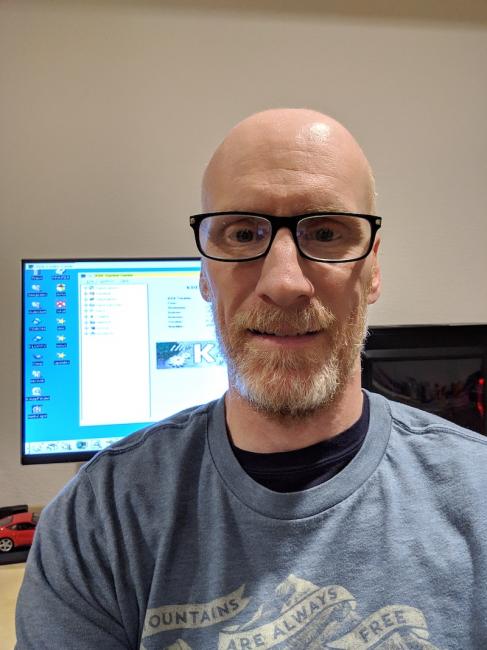
I've been a subscriber for more than ten years to keep up with the latest Linux info. Favorite memory was when LJ,/em> was rescued by PIA! First distro was Red Hat Linux.
Ron Singh

I've been a subscriber for two years. I subscribed because LJ covered software and hardware. It has had a long tenure in Linux, and it is also quite inspiring. My favoriate memories are limited, but email conversations with LJ staff have been very friendly and informative. My first distro was Ubuntu 16.04 (Unity DT), and I distro-hopped through at least 40 before ending up with Mint Xfce and Cinnamon DTs.
My background with computing is fairly long (since '79), what with mucking about in CP/M, AppleDOS, DOS and Windows. Hardware being analog and digital from 6800/6502/Z80 in the distant past to current ARM devices and the like.
I made the foray into Linux in late 2016 as a reaction to Windows 10's quirks and telemetry. My initial experience with Ubuntu 16.04 was satisfying in that I felt safe and had no odd OS behaviors. As my experience grew after a fairly intense distro-hopping period, I wondered why I waited so long to make the move to Linux.
LJ has been instrumental in my Linux journey, with well-written and researched articles and thoughtful opinion pieces—a real treat.
These days, I am all about spreading the word to my community (500K people), in retirement homes, high schools, cop shops and the like. It seems to be working, albeit slowly. Next stop, flyers at cinemas! My evangelism requires very little monetary outlay, mostly time to visit venues to get some flyers posted and handed out. It seems like that most visceral of media, paper, has become something of a curiosity to the young 'uns, it gives them pause, looks like. If anyone has any ideas of other venues to approach, I am all ears, I am in Waterloo, Ontario, Canada. Hopefully my pic does not make anyone cry:-(
Peter van der Burg

I'm a father of five now adult children. I'm a New Zealander residing in Melbourne, Victoria (Aus). My early training was in radio electronics, where I soon gained an interest in microcomputers (ZX81!). This eventually led to me branching into UNIX Systems Administration and then ICT Management. I now freelance as an ICT Project Manager, and I develop interesting solutions on the Raspberry Pi and ESP8266 hardware using Python and MicroPython. My Linux distribution of choice is currently the no-frills Debian.
I like subscribing to this particular Linux magazine (for more than 20 years now) for its high-quality journalism. Although so much is available freely through private websites, etc., this magazine offers curated content that takes me into realms I may not otherwise go. Good brain food!
My all-time best application of Linux came from an obscure place. In 2007 and 2008, I went to Ethiopia with Habitat for Humanity to build mud houses. When I was asked a year later to participate in an exhibition showcasing my experience, presenting a few dozen photos wouldn't do it justice. So thinking creatively, it went from "what if each photo frame in the gallery was an album slideshow?" to what ultimately became a 24-screen video wall that ran entirely off Linux. The concept remained, that each screen ran its own slideshow, but it was enhanced so all slideshows ran photos from a set theme for a period of a few minutes.
This is where the power of Linux and particularly X Windows steps in. It encapsulates almost everything I love about Linux over any other OS. The granularity of control over the hardware, wide hardware support, software that spans generations of hardware and extensive and powerful networking capability.
Each column of four screens was driven by a PC with two dual-head videocards, with all six PCs being served images from a Linux file server. The server ran 24 processes, each serving photos to its respective screen. The result was mesmerising! Through the extensive control set of X11 and VESA commands, I could even power manage all the screens to coincide with the gallery opening hours.
Having free access to a lot of old PC hardware, I had to find a version of Linux of the same era. I settled with Suse 9 running the rudimentary TWM X Windows Manager. Nvidia still had drivers available! Using scavenged materials, I recall only spending about $100 on hardware fastenings and electrical power boards.
The server was multi-homed, meaning the screen driving PCs sat on their own trusted network, while the server was also on a less trusted network allowing remote systems administration.
The Videowall continued to be used post exhibition for a few years as a Conference Information Board for locally held events. Overall, it was a great project for applied Linux.
Jose Schiavon
I've been a subscriber since 2000, but I started reading LJ in 1998. I subscribed because I didn't want to miss an issue, because I was buying them from the magazine stand. There are too many favorite memories, but the one that comes to my mind is the email sent out in January last year with the announcement of LJ 2.0. Way to go! The first distribution I installed was Slackware 2.1 in 1996. The installation CD came from the book Build a Linux Internet Server by George Eckel, and since then, I have used several other distros. Happy 25th birthday!
Rex Guinn
I've subscribed for 24 years. I really like to read the articles and then follow along. I like Reuven Lerner's articles, Dave Taylor's and Kyle Rankin. My favorite articles were by Shawn Powers on his bird watching. Slackware, I think, back in the 1990s was my first distro. I had one of the original laptops that only had a diskette drive and a 10Gig hd. I installed Slackware on it with diskettes, it took three tries. I used it to do a newsletter for our motorcycle club with tex. It was lots of fun (ha ha), but it worked.
Sam Schmalzried
I've been subscribed to Linux Journal for about six months. The quality of articles is really high, and most of the articles are more relevant to me than other Linux-related publications tend to be. Unfortunately I haven't been reading long enough to have good or bad memories about Linux Journal. My first distribution was Ubuntu 11.04 (I think), right before they switched from GNOME to Unity as the default desktop environment. That first version update was a big surprise because everything changed!
Claus Kalle

I've subscribed since mid-1995, or maybe the end of 1994 or earlier (USENIX LISA 93?). It is THE source for free-thinking Linux enthusiam and its people. My favorite memory is the appearance of an international Linux Journal after many years of work in the German UNIX Users Group (GUUG) and its technical newsletter GUUG-Nachrichten. My first distro was Slackware. Face picture attached. Or would you prefer it in .face format? Remember? :)
Luca Maranzano
I subscribed from the very beginning, number 1! I subscribe to keep myself up to date with the Linux ecosystem. Articles about the Wine Project for running Windows app under Linux were my favorite. My first distros were SLS Softlanding Linux Systems and Debian 0.93.
Ricardo Patara
I've subscribed for more then 10 years. I have been working with Linux since college, and in my day to day, there is a set of Linux servers I had to administer, and in some cases do some kernel tunning, and Linux Journal was very good source of information, tips and knowledge. Favorite LJ memory is hacks from Kyle Rankin that I always had the opportunity to try at work. My first distro was Red Hat and the installation was using set of CD-ROMs.
Jens Hilligsøe
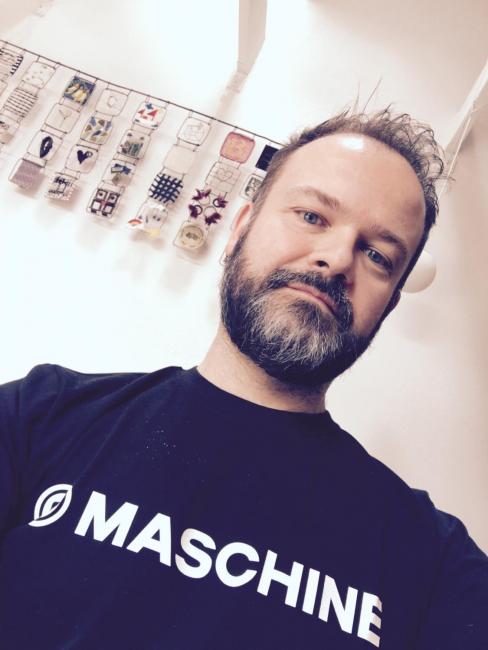
The first issue I received was #10. Back in 1994, already being enthusiastic about Linux, I discovered one of my fellow students at Uni had an issue with him. I got some sort of coupon, from inside the magazine that I could fill out with my details, and I sent it off. I still retain the in print versions I have gotten over the years in my library. It's not very Marie Kondo-like, but I have good memories of learning new technologies in there. Reuven's first article on Ruby on Rails is my favorite memory. Or, this is I believe, from an issue before #10, but the one about the HTTP protocol and the possibilities it could have.
My first distribution was 40 floppy SlackWare on a multi-day run between Uni and my dorm room (I owned ~20 blank floppies).
Tord Larsson
I've been a subscriber for quite a while, and I enjoy quite a bit reading the LJ issues once they arrive. I'm very impressed by the quality and the skills of those that write articles for the journal, and I hope it can continue for the next 25 years. I've subscribed for approx. 15 years to keep myself updated on the Linux community. My favorite LJ memory is when the journal was "rescued" and re-started. My first distro was Red Hat Linux 5 (I think that was the version number).
Markus Falkner
As far as my subscription, I had to search through my emails (order conformation), and the oldest I found dates back to 2005. I subscribe to support your work and to learn something new every now and then. It's simply not possible to review all Linux applications and news on my own. With so much high quality content, it's not so easy for me to pick one favorite memory. What I've really enjoyed reading since the beginning are the columns (EOF, Hack and /, Work the Shell, diff -u, ...). My first distro? That's a hard question. Most probably it was SuSE. Currently, I'm on Manjaro after a few years of using KUbuntu and some others.
Jarom
I started subscribing to Linux Journal in 2000. I subscribe because I am interested in what is happening in Linux. It was so cool to use Slackware and a bunch of floppy drives to get a multi-user multi-tasking UNIX-like operating system on my PC. I was much happier using Red Hat 4.2 on a CDROM however. My favorite Linux Journal memory is when it came back from the dead.
Chandler Wilkerson
I've been a subscriber since some point in 1997. (I had to let go of my paper back issues long ago.) I continue to subscribe to LJ because of the relevance of its focus to my own professional and hobby use of Linux. As I see each new cover for the first time, more often than not, I'm pleasantly surprised to find that the focus of the new issue aligns with some topic I'd very recently either unearthed, or meant to delve into, but had not had time for.
I have many great memories of LJ over the years. One that amused me was the tongue-in-cheek backlash against Marcel Gagné's Cooking with Linux column. I always appreciated his lighthearted style and use of recipes as a metaphor for installing software—prescient, given the rise of automation tools based on, yes, recipes and cookbooks.
I suppose unpacking tarballs to install software was always near to my heart considering I started with Slakware (from the 1994 InfoMagic CDROM set, still hanging on my wall).
Here's to many more years!
Peter Teuben
I've been a subscriber since the first stapled one. It's just a fun read My favorites were the "best of" articles. My first distro was Slackware, 1994/5, on a 386SX.
Prior to 1994, I always used VMS and UNIX-based systems professionally, and when I booted Slackware on a 386SX (with way too little memory), I was flabbergasted when I saw the familiar X-terminal in the twm window manager. It took minutes to load and was quite useless, but the fact that at home I could run this, I was sold. I still had my 3b1 (an AT&T box with a 10 MHz 68010 processor). I immediately put a 486DX2-66 box together, which was the state of the art at the time, and ran my benchmarks, outperforming my Sun3 and even Sun4 at the office. For some professional work, I keep a list of benchmarks of an N-body code. Both the 16MHz 386SX and the 68010 did not have a floating point processor and ran this particular code in 87" and 49" resp. A Sun-4/60 would run this in 1", but the 486 in 0.093", more than 10 times faster. For comparison, one of my modern desktops would run this in 0.00030", about 300 times the speed of the 486.
I can also add that I converted our group from Solaris to Linux. We still run Linux on all of our desktops, although quite a few of my colleagues have switched to the almost-UNIX laptops that Apple sells.
Kosmas Chatzimichalis
I've been a subscriber since 2009 for the interesting articles and many opportunities to discover. Too many favorites to put here—there's just always interesting articles and ideas to explore after reading them in Linux Journal. My most recent favorite memory was definitely the restart after the short break. My first distribution was quite possibly Mandriva around 2000.
George Dimitoglou
I've been a subscriber for a dozen years, maybe longer, but the earliest receipt I can find in my email is from 07-Apr-2007. I subscribe to support the movement! My favorite memory: it is not just content, I like it all—it was how nostalgic I felt when I realized that the publication will be going online and I would no longer hold it in my hands. I like the electronic version, I just realized how much I love my LJ! First distro was Debian.
Tom Parrott
Subscriber since 2012. Favourite: Doc Searls' posts. First distro: Debian Woody
Salahuddin M. ElKazak
I'vew subscribed for about five years (with gaps). It is a very useful magazine, and it's about Linux, enough said! My favorite is Shawn Powers' useful articles with humor. I remember reading a part on wives and although they prevent us from taking the switches apart and jacking them up to crontabs, they keep us well fed and dressed! :D I cannot remember my first distribution, but I usually prefer the ones featuring Security.
Evan Jenkins
 I started reading Linux
Journal very early on in the game, like episode two or three or something.
I was a mainframe console operator at the time looking to learn UNIX, and
one of my colleagues tipped me off. I thought "why not install UNIX at home
and learn it from the inside out?" I was hooked.
Twenty-six years later, I'm still
hooked. I was a regular subscriber for one-year stints, and then suffered
through the Linux Journal blackout. But now I take the digital subscription
out of pure joy and interest.
I started reading Linux
Journal very early on in the game, like episode two or three or something.
I was a mainframe console operator at the time looking to learn UNIX, and
one of my colleagues tipped me off. I thought "why not install UNIX at home
and learn it from the inside out?" I was hooked.
Twenty-six years later, I'm still
hooked. I was a regular subscriber for one-year stints, and then suffered
through the Linux Journal blackout. But now I take the digital subscription
out of pure joy and interest.
I recall stumbling across a howto that layed out the basics of setting up point-to-point protocol and supporting telnet between two Linux boxen. I was all over that and had my connection from home to work running in a flash. It was the first time anyone in my shop had every heard of Linux. The year? 1996.
My first distro? Here, I'll try this one from memory, SLS 0.99pl45. I believe the pl stood for "patch level". My first requirement: obtain about 25 3.25" floppies for the download, about 15 of which were for X alone.
Ray Foulkes

Above is me, Ray Foulkes, having fun on holidays. I am 73 years old and have been a Linux Journal subscriber for er, I think since the beginning of time (that is, I have forgotten). The earliest email I have from you is April 2007. Prior to my retirement 15 years ago, I was a VP of a large organization in Europe. My remit was entirely technical and had been the whole of my career in computing (since 1969). Why do I still subscribe? Primarily, I like your style, and I like to keep up to date with what is going on in the Linux world.
I am however a Linux user rather than a Linux developer or experimenter. I have seen in various magazines the "desktops" of various readers. They all look beautifully neat. To illustrate my use of Linux (and other OSes), I thought that I would send you an image of the reality of my desktop as opposed to the marketing version, and then explain my use of Linux.
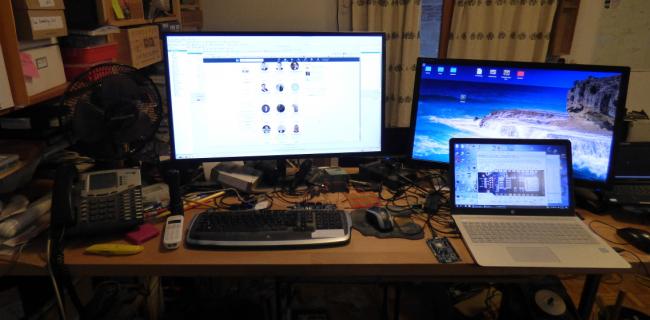
The two large screens are one of three OpenSuse "desktops". The one on the left is showing my "domestic" desktop, which is Linux Mint (a somewhat old version) running under VMware Workstation on the OpenSUSE host. There I do my email and fun browsing (like now), but normally it (and the other large screen) contains several windows of the SEGGER development environment, Kfind, Kate, Kompare, Ultraedit (sometimes), plus various other technical tools as well as a couple terminal windows (for midnight commander, etc.). That is just as cluttered as the rest of my physical desktop.
The portable to the right-hand side is (close your eyes here) a Windows 10 machine for doing those things that even my VMware Windows image cannot do (such as deal with obscure USB devices). It also does things that Linux cannot do (such as run technical programs written and supported only on Windows).
Just peeping around the end of the large screen to the right is an EEEpc 901 (upgraded EEprom) running LXDE, which I take with me on journeys if I think someone is likely to steal my PC (good luck with selling an EEEpc).
The large telephone is an IP extension to my friend's exchange in his house in the UK. I failed to mention that the above setup is in France, by the way. If you look carefully, you will see bits of electronics with wires scattered about. These are the nRF52 development cards (and some targets, but too small to see). I am developing software using the large machines for these little radios that contain an ARM Cortex processor running at 64MHz, 1Mbyte EEprom and 256Kbyte RAM together with the 2.4GHz radio, and no, they are not running Linux before you ask. The box at the back between the screens is an oscilloscope (only runs on Windows though), which I use for checking the digital signals coming from the nRF52s.
My electronics desk (just as cluttered) sits to the left of this one with the usual array of magnifying glasses, solder station, wires, chips and so on.
So, by preference, I am a Linux rather than a Windows user. Although you can see a pretty picture on the right-hand screen, I really don't give much of a hoot about how pretty my desktop looks or whether windows fold as I close them. Although I keep my machines fully patched up, I try very hard not to upgrade to some new version. My desire is stability, not just in the technical sense of not crashing, but in the human sense of not having to learn yet another way of doing something, searching menus that some cretin thinks should be shuffled, missing facilities that someone thinks "simplifies my life", banning me from putting things where I like on my screen desktop etc., etc., etc. I am not totally immune to improvements, but the gain has to be worth the pain. After all, in my career I have learned to use at least 20 text editors, so learning another one should be easy. However, I have a "day job" so to speak, so I will stick with what I know, thanks. I used to use the GNU toolchain (I still do in a sense since SEGGER uses the GNU compiler) but the SEGGER development environment saves me from having 20 windows open when debugging two nRF52 simultaneously (the penalty of developing radio software). SEGGER took a lot less time to learn than GNU compiler, linker, debugger and speeded up my development so learning it was worthwhile. I had already confronted Eclipse and, like it's name, decided that it was obscure(d).
During my career I was somewhat guilty of pushing Linux long before it was ready for prime time. I tried a few times but my R&D team routinely came back with the "you gotta be kidding" result. I have happily watched its amazing progress, both through using it and following its development in the press, such as in Linux Journal. I started off (if I faintly recall) by buying a boxed Suse, which I feel has been one of the most stable Linux distributions over its lifetime.
So, there you have it. You now know one of your loyal readers just a little bit better—not a "no Windows" person, but still a Linux advocate.
Prof. Jean-François Boisvieux
I've been a subscriber from the beginning, I used Linux when I could install a Slackware (I think) with two diskettes as far as I remember. LJ was the reference to learn how to use and to correct errors. It's interesting, well written, inspiring.
Pierluigi
I believe that, despite being a loyal subscriber for so many years, this is the first time I've written to LJ. After 25 years, however, I thought it was about time.
Well, if I recall correctly I've been a LJ subscriber since 1995 or 1996. I remember I found the magazine at an international newsstand here in Rome. Then, after voraciously reading it, I immediately decided to subscribe (althrough the subscription was by snail mail, no online subscriptions yet). At that time, it was the one and only Linux magazine I could find, and I was thrilled and amazed by the quality of its articles (and still am nowadays, by the way).
I was learning and studying Linux (first distribution was Slackware 0.something), and I realized that reading LJ was a tremendous help and pleasure, also because the documentation was very sparse and difficult to find (no internet as we know it today, no Google). My favorite LJ memory is probably the eagerness to open the LJ envelope just after receiving the magazine in my mailbox and start reading it, line by line, ad by ad, consuming the paper pages.
Today, so many things have changed in our lives, in our jobs, but for me, Linux Journal still means the same old pleasure of learning something interesting and valuable.
Thank you all, for being a loyal companion to me for so much time and keep up the great work!
Robert Patton II
I've been a subscriber for about two years. I like the info on what is being used and the Bash Programming articles. My favorite is trying out the Bash programming examples from Dave, and learning syntax is everything still even after all these years. My first distro originally was Caldera Open Linux (2.0 kernel if I remember correctly), then I moved to Slackware 3.4 around 1997 I think (now running Slackware 14.2).
Ruslan Sarychev

I've subscribed to the magazine since October 2018. I am interested in the development of open source and the implementation of projects in open code. As practice shows, open-source solutions are more flexible and reliable, although it requires a lot of work on the correct configuration of the system and code.
The first distribution I used was Debian 3.0, a branch of Debian with a long history, and I think it's simple enough for beginners to use. At the moment, more attention is paid to the branch of Red Hat, in particular Centos.
Philip Raymond

Jelle Kalf
LJ has been a good friend for more than a decade. I was a member in the earlier times around the 2000s and later on as well. It's a valuable treasure cove full of invaluable insights and information on a broad spectrum of Linux-based application landscape. My favorite LJ memory is the perserverance of LJ and the editors keeping LJ alive for the "so-manyth-time" around. Keep up the good work! My first distro was Slackware 2.2, which came on the Infomagic.com "LINUX Developer's Resource" of March 1995. I still have this CD set. It's the treasure of my home office.
Manuel Portillo
I've been a subscriber for nine years. I've always been always passionate about learning new technologies, knowing about what other people are doing in this field (Linux, system administration, DevOps, Security) and open source projects, so I found the content of the magazine really covering most of these interesting topics to me, at different levels. So this is how I support the LJ team's work.
I remember very well that a good friend (Howard Pepper), which is the best person I know when it comes to writing shell scripts, worked on a script to calculate the day of the week for a given date, and then a few issues later we saw an article from Dave Taylor with a similar topic, and then my friend wrote to the magazine to mention his solution, which eventually made it to the Letters section of the magazine, and Howard showed it to me very proudly, and even Dave recognized his skills.
Mandrake was my first distro.
Martin Roberts
I've subscribed since 2011. I like the content and didn't like having to use a non-Linux machine to read most of the others. My favorite LJ memory is seeing you back in print. First distro was Trans-Ameritech V1.0 March 1995, installed with my first and very expensive CD drive. Post traumatic stress from SCO Unix install on 53! floppy disks!!!
Toby Meehan

I've subscribed for about 15 years (best guess). Why? I'm a Linux user. I believe in sharing and the open source approach to software development. I support that community in different ways, Linux Journal being one of them. I also find practical advice, general trends, and (from Doc Searls) abstract concepts to ponder. More recently, I've been listening to your podcast.
Favorite memory? Learning that the animation industry was using Linux heavily for their 3D rendering farms in an LJ article many years ago. It was rewarding to think my kids benefited from Linux in a very direct and meaningful way.
First distro? Red Hat Linux v4. I knew folks who were using Yggdrasil Linux and Slackware, but I wasn't able to buy a computer until later when Red Hat rose in popularity. I still remember my surprise when Ted Ts'o (kernel developer) replied to a modem driver question I posted.
I stuck with Red Hat Linux until they phased it out with Red Hat Enterprise Linux and before they got Fedora stable. I moved to Mandrake until it changed owners and changed its name to Mandriva. I then tried SuSE for a bit, but eventually got hooked on Kubuntu until the KDE 4 disaster. Then it was onto Ubuntu until they went with Unity. I've been on Linux Mint since.
Viorel Anghel
I'm one of the founding members of the Romanian Linux Users Group (RLUG). I've been using Linux since ~1995, first as a hobby, then as a professional. The first distribution I used was Slackware, installed from (a backpack with) 30 floppy disks.
I've been a subscriber since around 2000–2001. I keep my Linux Journal subscription because it makes me zen.
Peter Ziobrzynski
I've been a subscriber 20+ years for access to Linux-related howtos. My favorite Linux memory is powering up X11 on Yggdrasil on my i386. My first distro was TAMU in 1992. See an article I wrote for LJ here.
Andrii Dykhlin

I have been a subscriber since September 2017 (having the issues paid until the December 2020). I have subscribed to LJ because it is an old and really relevant part of the GNU/Linux history. I have read articles on the website and decided to give it a try.
I was very upset when Linux Journal cancelled the publications, and immediately bought the archive to help LJ to survive. But that was the first step to the best memories, as the journal is alive again, and that is wonderful. Long live the king! And realizing Dave Taylor is "our guy" as well, I really appreciate his work on DooM.
I tried Kubuntu in 2010, and it was my first distribution and a step away from Windows XP. Without a doubt, it was the cool step. I have tried some other distributions like OpenSuse, Fedora, Arch and different *buntu flavors, but I still stay with pure and stable Debian at home and Debian/CentOS for my own needs on the VPS.
I would like to thank you for sharing the knowledge, the passion to the FLOSS community, to all that we have now. No one would conquer the mountain without a movement, and as far as we know, the world without borders and walls hardly needs Windows and Gates. But we can forgive them everything and live our own lives.
Gary Stewart
I been a subscriber from the second issue, only because I did not find out in time to subscribe from the first, although I did manage to did get a loose-leaf photocopied back issue of it. I also subscribed to the all too short lived Embedded Linux Journal, which, being an old hardware/software guy (in that order) is still one of my main interests in Linux.I subscribe for the Quality and diversity of the articles. There has always been at least one article, and usually more than one, that I find interesting or useful. And they have always been well written.
My favorite LJ memory is when I read my email that said Linux Journal was back from the dead!
My first distro was Linux Systems Laboratory Linux release 0.99 on about 60 3 1/2" double-sided/double-density floppy disks.
Ono Vaticone
I've been a subscriber for about 10 years because Linux rocks! My favorite memory was the first appearances of lightweight virtualization and Docker. First distro was Slackware.Chris "Trip" Artrip
I have been a subscriber for approximately 11 years. I subscribe for the insightful "How-to" articles on various Linux-based software solutions as well as for Kyle Rankin's command-line articles. My favorite memories from Linux Journal were the video introductions by Shawn Powers. His enthusiasm and passion in those short videos made me want to dig into each issue that much quicker.
My first experience with Linux was with S.u.S.E. and Red Hat in 1997. The first distribution I installed to a personal machine for my own use was Mandrake in 1999. I currently have Linux Mint installed on a home laptop and a home desktop.
Bill Pemberton
I've been reading LJ off and on for many years. I honestly don't recall how far back my mags went, but I converted to a cd copy and tossed them. It's the info that is important to me. I have enjoyed the columns about BASH, various things folks have done with Linux (web servers, camera apps, games, databases, etc.) and the op-ed pieces. Overall, there is nothing about LJ that I have taken exception with. Different opinions sure. But layout, goals, presentation have been just great. I've been playing with this stuff since Slackware 0.99pl14, installed via gravis sound card as the cdrom interface for a sony cd reader on a gateway 486 computer. I kept the turbo boost toggled on for kicks. I had to hand-patch the interrupts for the internal modem because it was not keeping the update. After a month or so, I dumped the internal for an external. That was the last desktop computer I bought. I have built everything since.
John Fox
I've been a subscriber for about 14 years. I have always believed that Linux is an operating system that will be here to stay. As an IT professional, I need to keep up to date on what goes on in the operating system arena. Linux Journal is my go-to magazine for that information on Linux. I enjoy getting to go through every page each month, reading the articles that peak my interest and trying out the new things that I learned from the magazine. First distro was Red Hat 5.0.
Stephen Cross
I've been a subscriber for two months. It was a gift from my wife at Christmas. I moved from Mac to Linux in 2018. New to Linux, I'm a sponge for information. My first distro was PopOS!
Jean-Michel Lacroix
I've subscribed since 1995 because I love Linux. My favorite LJ memory is building a virtual juke box. First distro was Slackware.
Ray Tracy
The first Issue I remember was November 1994, and Samba was the topic. I have been a longtime UNIX user/administrator and wanted to find out more about this Linux thing, so I grabbed an old machine and about 2 million floppy disks from Slackware, and after an awful long time, BAM! I had my very own Linux box. I felt very much at home with it coming from UNIX. Then came getting the GUI to work, mode lines and a few hundred obscure settings later, I had X up and running. Then getting it to talk with the hated enemy, Windows! The excitement for me was to be able to rip into the guts and poke all the corners. Tune that baby to a fare thee well. Great fun, and of course I could do it all better than anyone else—NOT, but I tried. Thanks for a great rag.
Wesley J. Wieland

I've been a subscriber for about 5 years, with an interruption in there somewhere. I enjoy the articles, find them pertinent and interesting as well as informative. LJ often leads me to a tool or a configuration setting that improves my knowledge. Favorite LJ memory: I emailed an article author who was covering Nextcloud setup and usage. He replied in a timely way and was encouraging, seeming to take my input positively. I really appreciated that.
First distribution: I don't recall the actual "version". It was pre-v1.0 and came in a tarball, which broke out to about 80 3.5" floppy disks. It took me a whole morning to load it on a 386SX. Getting X up and running took another half a day. I suppose that if one insisted on an actual "distribution", it was I believe Red Hat. Later on it was Mandrake, then onto SUSE, and some others for short times. I like any Debian-based distro for the most part. But whatever it is, it has to be able to run Enlightenment. That is my one irrational requirement.
Mike Jeays
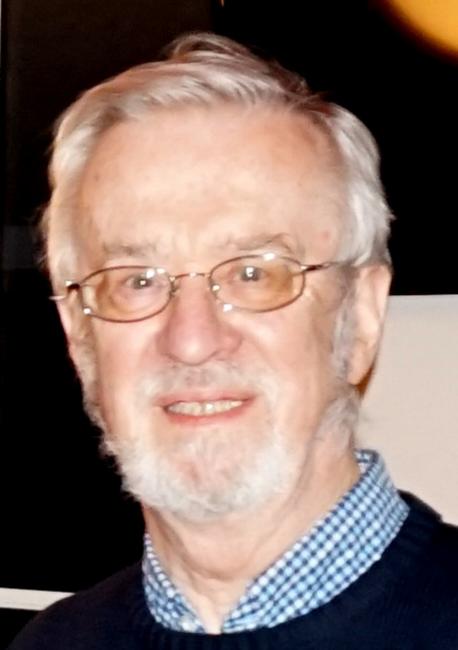
I have been a subscriber since at least 2006, and I have many back issues stacked up in my basement that I plan to look through "one day". I started using FreeBSD back in 1997 when a friend gave me a copy on 3.5 inch floppies, including X-windows on about 30 disks. Getting a CD reader was a great advance a couple years later. I switched to Linux quite soon after, but I don't remember which distribution. Mint is my favorite distro at the moment, and I have tried many others using VirtualBox.
I enjoy Linux Journal for its in-depth articles on many topics, although I am a bit out of my depth sometimes. I retired in 2006, when I was the open source advocate for a Canadian government department.
The July 2006 issue got me interested in Ruby and Ruby on Rails, which were new to me. Ruby is a interesting alternative to Python, which I was using quite heavily at the time. The same issue had an excellent article on OpenSSL, which I read thoroughly.
Chris Rheinherren

My name is Chris Rheinherren and I've been a subscriber of Linux Journal for at least 5 years if not a few more beyond that. I got interested in Linux and was looking around for a magazine, and tried a few of them but prefer Linux Journal as a professional magazine.
I first started out with Simply Mepis and later moved on to Fedora and Ubuntu. I currently use Ubuntu almost exclusively. I have written a couple articles for Full Circle magazine, a community-based magazine for Ubuntu users.
I own and operate a small IRC network that uses Linux servers and manage several websites as well.
Peter Moyn
I've been a subscriber for 21 years. I was a UNIX system programmer and found that Linux was a cheap way to run a UNIX-like system in my home lab. Linux Journal was a very good way of keeping up with what was happening on the platform. I think the fact the journal is back publishing again is my "favorite memory". I think my first distro was the Caldera Desktop Distribution from the mid-1990s.
Frank L. Palmeri
 I've been a subscriber for 10 years.
Linux Journal is the most reliable source of
information on the world's best operating system.
My favorite memory is the very creative Tux photos that used
to be submitted. Tux often found himself in some very strange places.
First distro was Ubuntu.
I've been a subscriber for 10 years.
Linux Journal is the most reliable source of
information on the world's best operating system.
My favorite memory is the very creative Tux photos that used
to be submitted. Tux often found himself in some very strange places.
First distro was Ubuntu.
Congratulations on 25 years of Linux Journal! That's quite an achievement, and I'm very lucky to have been around for a good chunk of it. So many great articles over all these years. Really great when it used to be on the newstand as well, and I still miss that, but I know time marches on. Keep up the great work for the next 25 years.
Jim Hall

I don't remember how long I've been a subscriber to Linux Journal, but I know it was pretty early in its history. Maybe 1995 or so.
I am a longtime Linux user. I started with Linux in 1993. I was a "power" MS-DOS user at the time, but frequently used the UNIX computer labs in the computer science department, especially to write data analysis programs for my physics labs. I wanted the same power on my PC at home. I asked around on the Usenet newsgroups and someone recommended this new thing called "Linux". It was free and I could run it on my '386 computer. I paid someone to mail me a stack of 3 1/2-inch floppies with the Softlanding Linux System (SLS) distribution installer. At the time, SLS advertised itself as a "Gentle Touchdowns for DOS Bailouts" and it certainly was easy enough for me.
That was my first introduction to Linux. Linux was still pretty rough; we didn't have kernel modules in the pre-1.0 days. If you wanted to add support for a sound card or floppy tape drive, you had to compile a custom kernel. But it was enough for me. I was immediately hooked. I'm still running Linux (Fedora 29) and loving it.
I have written or contributed to dozens of open-source software programs since the 1990s, but the one I'll be known for is FreeDOS, a free software/open source software implementation of DOS. And it's interesting to note that FreeDOS would not have happened without Linux. In 1994, when it seemed certain Microsoft would stop developing MS-DOS, I thought, "If people could come together to create a free version of UNIX (Linux), I'm sure we could do the same with DOS (FreeDOS)." And that's what happened. It was because of Linux's success that I decided to start FreeDOS.
Tim LaBerge
I've been a subscriber since fall 2001. I subscribe to Linux Journal to support the community that supports Open Source. My favorite Linux Journal memory is seeing an article written by a fellow graduate of Grafton (North Dakota) High School. My first distribution was a flavor of Slackware...I think I still have the CDs it came on.
Best regards and keep up the good fight.
Jesse A Lambertson
I've been a subscriber for three years I believe (since before the current version of LJ). I am a life-long learner and computers, OS and FOSS, alternatives, are part of that learning. I think the long Kyle Rankin write-up of Qubes was pretty fantastic. Before I installed (wiping Windows for good) and used my current two Ubuntu variations, I installed Debian as my default on a desktop and a couple virtual machines before that.
Amel Hodzic

I'm from Chicago, and I've been a Linux Journal subscriber for over a decade now. I love the topics covered therein, along with useful tips, ideas and tech trends covered by the writers of Linux Journal. One of my favorite memories related to Linux Journal is actually the "Open Video to HP" by Shawn Powers, after he found out that HP blindly endorsed Windows Vista for its lightweight netbook for educational purposes. I am proud to continue supporting Linux Journal and their work.
Patrick Goetz
I've been a continuous subscriber since the first issue, with two subscriptions (work and home) during the print era. I subscribe to keep up with Linux developments, necessary for a Linux admin. My first distro was Yggdrasil.
Michael Gracy

I have been a reader and subscriber for 10+ years! I subscribe because it is the most useful and unbiased publication on Linux and technology in the world. My favorite memory is when LJL rose from the proverbial grave to continue publishing! My first distribution was Red Hat 7 (pre-RHEL, Centos and Fedora), and my first UNIX was AT&T Unix 1.0 I've been a SysAdmin/DevOps engineer for almost 30 years and a "button pusher" since about age 5.
Attached is a picture of me performing at a concert for "Concord (CA) Night Out.
Rich Altmaier

I've been a subscriber since about early 2003. I started following Linux Journal during the SCO fiasco, where SCO sued various vendors claiming code had been taken from Unix System V. You might recall I posted a letter denying such taking, when I was VP of Engineering at then SGI. See https://en.wikipedia.org/wiki/SCO%E2%80%93SGI_code_dispute_of_2003. I don't see that my letter itself was captured by wikipedia, so I attach a copy. Linux Journal has always been a great reference for industry information, as well as technical information!
Regarding my favorite memory, I am not certain that LJ published responses to my letter, but in general, I remember a very big outpouring of support from the Linux community for our defense of Linux against SCO. I remember being very happy to see such support!
Sergi Puso
I've been a subscriber for 18 years, minus a five-month hiatus when you went 100% digital and it seemed outrageous to me at the time. Now, of course, it'd feel 10x more outrageous if you were to switch back to paper.
I would highlight that the articles are not just all technical info but also have a bit of a personal touch, where the authors show you all the journey, not only the right solution but also how they got there and what they got wrong along the way. What's my favorite LJ memory? Well of course the resurrection in 2018 was pure joy. I appreciated a lot your fight to get the magazine going again. I first used Slackware circa 1998, and SuSE 6.2 is the first I ever purchased.
Jaroslav Svoboda

I wish you lot of subscribers, and I wish us, readers, great time while reading your articles. I've been a subscriber for three months, because I love Linux, libre software, and I wish to support this amazing magazine that brings tons of valuable information. My first distro was Mandrake FiveStar around year 2004, which my father bought for $25 USD in a pack with user manual. I was only 13, and the installation was not easy for me even though that user manual was translated to my language (Czech). Everything was done by the method of trial and error. No C:, command line and no games—well I was a kid, so I did not understand why would anybody use this thing. I was a slave of Microsloth during my teen years because of games. Linux has been my main OS for more than 5 years now, and I would not go back.
Walter James

I've subscribed since about 2004. It is all a rollicking good read. Doc Searls is always compulsive reading. My first distro was one of the early Red Hats.
My favourite memory of using Linux was in 1997. I was working, in those days, at one of the five technical colleges in Oman. In those days we had Red Hat Linux 5.0, and my IT department had been using it for some time as the departmental file server for our Windows 95 clients in the computer labs and our staff rooms.
Our ministry issued all five of the colleges with a shiny new PC with NT server on it to run the college?~@~Ys network. For some reason, our college's NT server was the last to arrive. It came a long time after the other colleges had theirs, and by then I'd heard the reports of how bad it was and of how it broke down all the time. I remember how we installed the new kit in our server room but didn't connect it to anything. Instead, we connected the other two departments to our existing Linux server and just kept quiet about it.
I remember how, for years, the unreliability of those NT servers was a matter of ongoing controversy at the weekly deans' meetings. The acting dean of our college, who was also head of business studies, always reported how, to his firsthand knowledge, the NT server at our college was always working fine and had never given a single problem.
To the four other deans, our college was a source of bewilderment. We never came clean about it.
Maurício Junqueira
I've been a subscriber since around 1999. Favorite memory is Marcel Gangé starting an article saying "Bonjour mes amis" My first distro was SuSE, and nowadays it's OpenSuse Leap.
Charles Hattendorf
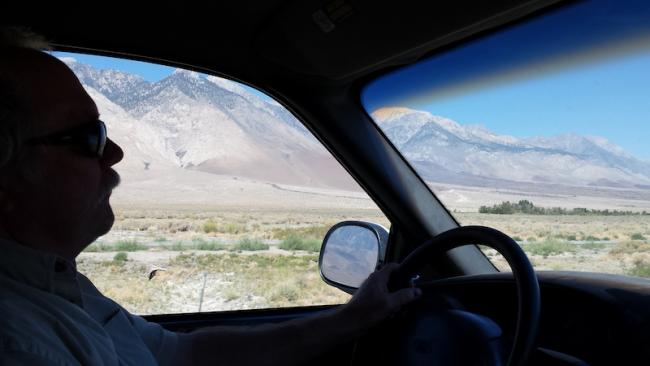
I think I have subscribed since your first issue. LJ has fact-filled information on my favorite operating system, and it's a testament to the power of open source. My favorite LJ memory is helping to port several hundred thousand lines of FORTRAN code over to GNU from an SGI Challenge and IRIX OS, thus saving the government a bundle of $$$, all with the help of LJ articles and the Linux community. First distro was Yggdrassil@ '92, and I still have the floppy. Keep up the good work folks! and thanks for being there.
Richard Chapman
I think I subscribed at the very outset, around 25 years ago anyway. I subscribed because I had downloaded one of the 0.9x releases of Linux back in whenever that was (1991?). A friend and I downloaded it onto floppy discs. I did the odd-numbered disks and he did the even-numbered ones. I can't remember how many nights it took us with 1200 baud modems. The excitement of finally booting up a UNIX system on my PC was incredible. When I proudly showed my wife the command line, she said "So?" Undaunted, we downloaded the X distribution the same way. Around 1994 I started working at a new firm and was really eager to insinuate Linux into their systems. At the time they were using various services for email, but mostly CompuServe. Without really asking for permission, I set up a Linux mail server on a little machine with 8meg of memory that was lying around unused and then announced to them that they had corporate email. I did the same with their web server—they didn't know they needed a web server. By the time I left that company, Microsoft Exchange had replaced the Linux email server, but nearly all their mission-critical systems were running on Linux in the background. Linux was bullet-proof. We had machines that ran for years under heavy loads with nary a crash.
Those were exciting days. We felt, somewhat arrogantly, that we could do anything and just about anything we did seemed like magic. Linux and open source made it happen.
Valerio Di Giampietro

I subscribed, for the first time, in 1994 starting with the third issue. In 1994 Linux Journal was the only magazine dedicated to Linux that was still a hobby project of Linus Torvalds. Today it's still a pleasure to read a magazine for Linux enthusiasts. I still remember an interview with some Google engineers (or maybe founders?) on why they choose Linux for their new search engine. At the time, they had 2,000 Linux servers. I installed Linux for the first time in May 1993, and I used the most popular distribution available at the time, it was SLS (Softlanding Linux System).
d0Y3net
I've been a subscriber for 2 years. I get great information bits and outlooks that I apply to my current skills and tools. My favorite memory is when LJ announced they were coming back from the shutdown of the publication.
Ralph Main
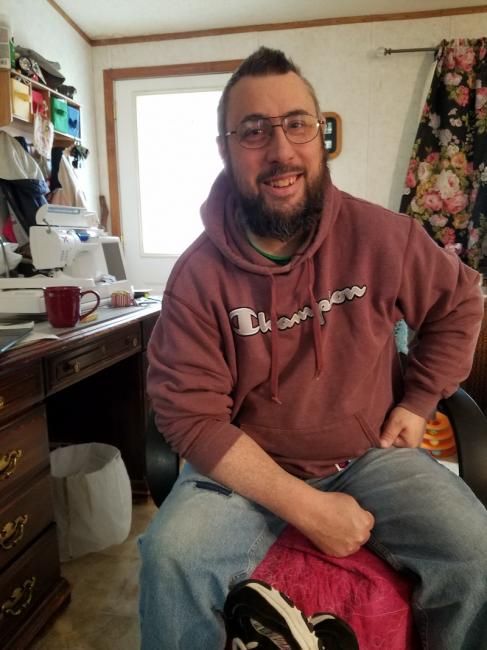
I've been a subscriber roughly one year. I subscribe to Linux Journal for the superb articles offered in the magazine each month. My favorite memory of LJ,/em> is the 1994 to 2018 download of each magazine over the years.
The first Linux distribution that I used was Red Hat, back in 1995.
Hari Narayanan

It is great that you are celebrating 25 years of Linux Journal. Happy 25th birthday. And thank you for being there for the last 25 years.
I have been a Linux Journal,/em> subscriber for 20+ years I think. Earlier in my career, I had to develop a Linux system from scratch. Every package (I don't think there were packages and package managers then) had to be chosen carefully and optimized to fit into the limited space we had for an embedded system. While searching the newsstands (yes, we had magazines back then), I came across a copy of Linux Journal and found the contents interesting. I decided to subscribe mostly out of curiosity. I had started with Linux 1.0 that came on a couple floppy disks. I forget the name of the company that built that. Just by sheer luck, there was an article about building a Linux system from scratch that was published not too long after I started my subscription. That helped me tremendously in my project, and I wrote to the author thanking him profusely. I have been a subscriber ever since. I believe that for any open source publication to survive, we all need to support it. It is also a forum for all of us to share our experiences and help others so that they don't have to re-invent the wheel. The knowledge that we gain from others is invaluable. I also see this as a way for the Linux and Open Source community to connect with each other, and together we can make it better for everyone. Wishing Linux Journal the very best and hope that it will be there for the generations to come.
Ralph D. Jenson
I've been a subscriber since 1992, I think. I was working at Cray Research, Inc., at the time and was very interested in a "Unix" that I wouldn't have to use my company's licenses/clout to have at home. That was when the Linux kernel was .02 or so I think. I remember doing ftp.funet.fi ftps several times, but the kernel was much smaller then. I saw an announcement about Linux Journal (on USENet?) and agreed with the comment about needing a respected journal to help further the cause of Linux, so I subscribed. I have many memories about LJ over the ages. One of my fav's was when Dave Taylor wrote his first column. I was like "Hey, isn't that the guy from HP I've traded emails with about ELM?" So that brought back some memories of my early days transitioning from being a IC designer to more of a software/OS-focused systems person.
Glad you folks have survived! I was greatly saddened when you announced you were closing the doors.
Eduardo Díz Comellas
I'm Eduardo Díaz Comellas, writing from Galicia, in the NW of Spai. I've been subscriber of LJ for a long long time, so much I can't remember. Maybe it was in 1996 or 1997. Purchasing LJ in Spain was a big deal, as shipping was more expensive than the magazine itself! I loved those first days of Linux, and LJ was great part of the joy. I discovered myself month after month reading in LJ exactly the topics I was investigating those days. I even thought that LJ had mind-reading skills.
I've always loved the mix of levels in LJ. Some articles for starters, others very specific and advanced...and always interesting. Perl programming, sysadmin stuff—great fun. When, some years after, I started my own consulting business, my LJ was available for all the IT staff.
For 25 more years to come! Cheers!
Pete Phillips
I'm pretty certain we started in the late 1990s. Why do I subscribe to Linux Journal? Nostalgia! No, not really—it's just in case another "editor wars" kicks off—I love a good editor war. Seriously, it's because there is so much going on in the Linux community now that I think you need some sort of aggregator to fish out what is important, do a bit of horizon scanning, etc.
My favorite memory is seeing the org-mode article in LJ. I used org-mode to run my life for nearly 8 years, and it was great to see someone else raving about it. Of course, I've moved back to vim now. Fickle.
Our NHS laboratory used our first UNIX distro (CTIX from Convergent Technology) on a CT Miniframe we bought in 1986/7, and it came with CT's version of System V.2 as I recall. It also came with a set of system 5 manuals in hard copy format in ring binders. I spent many a happy evening learning about awk, sed, ls, vi, etc. When we retired it, we donated it to the Swansea University Computing club, and Alan Cox and someone else (apologies for not remembering your name) came along to pick it up and gave me a bottle of wine! He asked why we had just bought a sun Sparc II and around 6 Sparc workstations instead of generic 80386 machines running Linux! I think that was the first I had heard of Linux. My first Linux distro was Slackware in around 1993/4. I remember shuffling dozens of floppy disks in and out of my newly bought home computer. In the lab, 6 years later, we retired the Suns and moved lock stock and barrel to Linux (Red Hat, Suse and then Ubuntu).
Stuart Guthrie
I've been a subscriber for about 4-5 years. I run with my co-founder a software company in the Investigations industry that runs on an open-source stack—Spring/Emberjs/Hibernate—mostly deploying to Postgresql.
I think LJ has useful information and is a great way for the Linux community to communicate. As a business, we pick up some useful tips and have contacted some of the advertisers regarding their products also.
I have enjoyed hearing about the internal going ons of the kernal community. I wish I could help those efforts, but we work in the JS/Java world.
LOL. My first distro was Mandrake. Don't shoot me.
John Floyd
I'm a longtime subscriber. I subscribed since issue 2 after scoring the first issue as a door prize at the first meeting of the Sydney Linux users group!
I still subscribe because the magazine still highlights modules, libraries or programs that fall under the radar on web searches or current awareness.
My first distribution was SLS. Then Slackware on 50 f floppies.
My favorite memory is being able to use Linux at work to replace an IBM power aix box. This depended on GNU FORTRAN becoming available. Then being able to write a Python program on a Linux system for autologging an echo sounder and GPS data with real-time echo trace running on a weather-proof laptop!
Paul Fortey
I have been a Linux Journal reader/subscriber for many many years, ever since I first came across Linux Journal (in print) 25 years ago. I live and work in Aberdeen Scotland.
I have been a fan of Linux since 1993/1994 when I first installed Yggdrasil Linux, eventually moving to SLS linux and then on to Red Hat and Fedora.
I used Linux as my desktop system until I was forced from a work perspective to move to Windows 7 years ago; however, I have used Linux continuously for the last 25 years.
I am still running a number of servers on DigitalOcean and supporting solutions on a number of others for customers, with solutions that have been running for 15+ years.
I have tried to be an advocate of Linux solutions over the years, explaining the virtues and benefits of using Linux, and Linux Journal was instrumental in providing backup and examples of what they could do.
Over the years there have so many good articles in Linux Journal that it is impossible to pick just one, I only hope that you continue to keep up the good work and continue the high standard that you have delivered in the past.
I have been lucky to have used Linux over the past 25 years, and at some point I would like to be able to contribute something back to the Linux community. Time and pressure of work has meant that I have not been able to do this so far.
Please keep up the good work and I will continue to be a subscriber.
Balázs Zalavári
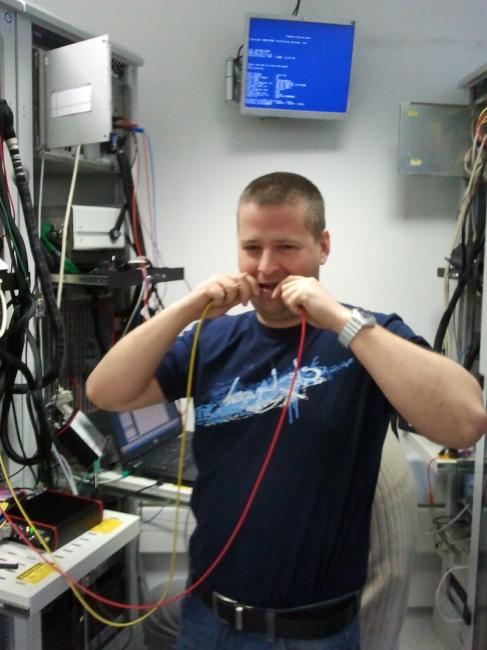
I am really glad to celebrate with you. I've been a subscriber since January 2006 (issue #141). I subscribe because an engineer must know a broad spectrum of tools to be able to choose the proper one. My favorite LJ memory is how I could follow an interesting period of web development between 2005 and 2010 with Reuven's great articles. My first distro was Mandrake Linux 7.0 in 2000.
Gert Dewit

I'm a subcriber since the very first issue (I've attached a picture of a stack of print issues with the first issue on top). I started using Linux from kernel version 0.99p15, installed using 3 Slackware floppy drives. Being over the moon with my personal UNIX system which meant I could use a similar system at home as the SunOS on 68k processor I used at work, I wanted to know everything about Linux. When Linux Journal was announced, I did not hesitate to subscribe.
Laurent 'Lol' Zimmerli

I've been a subscriber since September 2003. I read a few Linux publications and LJ was the best in my opinion. My favorite LJ memory is the day I learned LJ was coming back! I was very sad to see it disappear a few weeks before. My first distro was Red Hat 3 'Picasso', installed with (damn) floppies!
Jeff Crews

I'm not sure what you records show...I think I started a subscription as soon as I found your publication existed. Starting an ISP, I was reading as many O'Reilly books with animals on the cover as I could...along with LJ. I self-taught myself Linux (after previously cutting my teeth with SunOS on SPARC stations. I wanted to understand as much as I could about Linux applications, development and what the trends in the Open Source community are. I enjoy reading how Linux can be used with other open source systems to help our company. I have lots of LJ memories, but the only one that I can think of now is the fun articles by Marcel with the food metaphors. My first distro was Slackware 2.3 running Linux kernel 1.2.8. I used a Micron Pentium 133 workstation to run sendmail, named, ftp, apache, RADIUS and pppd to provide dialup service with 8 US Robotics Courier V. Everything modems direct connected on a Comtrol RocketPort RS-232 for our rural dialup ISP.
Pierre Rochefort
I can't remember how long I've been a subscriber, but it's been a while—maybe close to 20 years on and off (you'd have to look at your records...lol). I can remember asking my local newsstand operator (Le Signet in Hawkesbury, Ontario—"Signet" is the French word for "Bookmark"—they still operate today) if they would ever carry this obscure magazine called Linux Journal. I used to buy single magazines at first until I subscribed a few years later.
I subscribed because it was the only way to get good information about Linux. Back then, the internet was not what it is today. Getting to read what other people were doing was great. It's still a great resource today.
My favorite LJ memory is receiving my first issue in the mail. Seems so long ago, but it was great. I would get my very own Linux Journal every month! What could be better. For some reason, I remember setting up a lot of things using articles from Linux Journal. I remember setting up KDE, diald (who uses that anymore! And Samba, distcc.
My first distribution was a Slackware (or at least I think it was—I remember a version of 0.99pl17 for the kernel, but don't quote me on the number), installed from floppy images that I had downloaded over the course of a month because the BBS I was downloading it from had daily maximums, and the disk image were rapidly eating at that "quota". I guess for free, I couldn't expect much more than that. I was in college back then, and money was always in short supply. Making all those floppy images was a painful process. Installing proved a challenge because I would get through most of the disks only to get one bad disk near the end and have to redo the disk image. Ah, the memories. I remember buying my first Linux distribution on a trip to Quebec City over the holidays in 1994 while visiting my dad's family. I recall the CDs being in a red multi-cd case but can't remember the name of the company making it. Could be Walnut Creek but I'm not sure. It was a Slackware, of that I'm sure. I was so anxious to go back home because at my grandfather's house, there was no computer at all. When I got home (the four hour drive was a long one!!), I was so nervous creating the the boot and the root disks. Booting from CD wasn't big back then. Picking the right root and boot disk with the correct driver for whatever CD-ROM drive I had—I had this obscure drive that hooked up directly to a SoundBlaster card. Just the fact that this Linux distribution was multi-user was fascinating to me. I was used to the DOS and Windows where multitasking wasn't exactly huge.
Me again. I found which Linux distribution I bought first: It was a Slackware 4-CD set from InfoMagic - Google helped me ;-). It wasn't Walnut Creek as I originally stated. You guys are really taking me down memory lane on this one.
Stephen Brown aka digilink

I've been a subscriber for 10+ years because I learn a lot from the articles! Being an avid amateur radio operator, I was thrilled to see issue 189/January 2010. First distro ever was Slackware in 1997.
Christopher N Angulo-Bertram
I've been a subscriber for at least 2 years to gain insight into Linux and the community. My first Linux distro was Mepis.
I would like to let people know that my company Angbert Enterprises is working to get more SMBs to move to Linux not only on the server, but on the desktop. I believe, having been a systems engineer for some large corporations, that 90% of all users in a company could easily be moved to a Linux desktop, with no learning curve. The other 10% are because of strange proprietary applications that need special work to make them work on Linux, such as using Wine, Virtual Machines, or actually still needing a Windows computer.
Michael Fox
I'm not sure why LJ would want to feature me because, quite frankly, my skill level in Linux looks to be well below that of the reader that LJ is intended for. I agreed to be on the editorial board of the journal in the hope that I could help with comments and suggestions. I'm happy to continue being on the board and receiving editions of LJ to read and review, but I really don't think I fit the profile of your regular readers. At any rate, that is for you to decide, so here are my answers to your questions.
I've been a subscriber for one year. I enjoy reading anything about Linux that I can learn from, and/or those that inspire me to continue to use Linux and develop my Linux skills. In my case, even as a non-sophisticated Linux user, there are always articles in LJ that do this for me. My favorite LJ memory is the Privacy issue (May 2018). This is something I am concerned about, and the issue was well covered in the featured articles in the May 2018 edition.
SuSE 6.5 was my first distro. I bought it as a boxed set about 20 years ago, just to try this strange operating system called Linux on my Macintosh PowerPC. It was interesting to try, but didn't have much of the kind of software I regularly used to keep me interested. But it planted the idea of using Linux in the back of my head until 2010, when I was ready to try Linux again in the form of Ubuntu. I am now a fully converted Mac user, and I use mainly Ubuntu and Mint on Mac computers.
I am a member of a Linux user group in Peterborough, Ontario, Canada. It's great that we have such a group in a city this small!
Brian Chee
I think I've been a subscriber from the very beginning. I subscribe for the great tips and articles on Linux goodness. My favorite LJ memory is the first annual disk of The Whole Year. My first distro was Debian.
P.S. my student Warren Togami proposed an ICS499 Directed Studies project to me a while back to create a district called Fedora...I had trouble believing he could get it done in a single semester. It actually needed the summer to get rolling in addition to the original semester.
P.P.S. I also run mirror.ancl.hawaii.edu.
Gareth Evans

Peter Connolly
I've subscribed off and on since 1995. Mostly on. Love the regular columnists (e.g., Kyle, Dave, Reuven,...), the kernel gossip and the themed issues. Getting a bunch of free LJs at an SF conference and turning my geek friends onto LJ is my favorite LJ memory. I tried to get Yggdrasil Linux running in 1994, but it wasn't until Slackware 3.0 in 1995 that I finally got a Linux distribution working.
Doug Berg
I've been a subscriber for 20+ years. I subscribe to Linux Journal for the education. I always learn something new. The issue about Asterisk sticks in my mind. I liked the idea of beating the phone companies. It felt liberating. I think SUSE was my first distro, but then it was Red Hat, and then for long time it was Gentoo. Now it's Kubuntu.
Steve Langer, PhD Physics
I've been a subscriber since late 1994. Why: tech content from areas I'm not an expert in. Favorite memory: meeting Phil and Carlie at a UW-Seattle event around late 1996. First distro: Tamu followed quickly by Slackware (Spring 1994).
John Bales
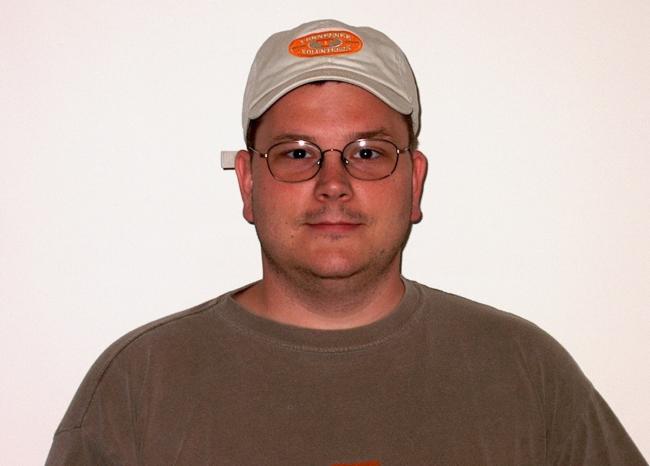
What a terrific way to celebrate LJ and the community that it spawned! I have bought or subscribed to LJ since 1995. Initially, I subscribed for the community, both the insights offered and the new knowledge conveyed. Nowadays, I subscribe simply to support LJ's continued publication! My favorite LJ memory is back in the day, searching bookstores, waiting for the latest supply-constrained edition to appear, hoping it would not sell out before I found my copy. My first distro was Slackware circa mid-1994 for home use. Debian circa late-1995 on an IBM RS/6000 for a work-related project, that I recall was fun torture!
Hans-Georg Esser

I've had a subscription since 1997, and I've located, scanned and attached your renewal letter (not email) from April 1998. I discovered your magazine and the similarly ancient German Linux-Magazin at the same time in a bookstore that targeted students of CS and other technical topics. Back then, the internet wasn't what it is today, and Linux information was rare. So after getting and reading and applying a couple copies of both magazines, I sent out my subscription forms.
Why do I read LJ? Well, basically comes down to a different question of "why do I use Linux?" It all started in ca. 1994 when I was frustrated with the comfort of TeXShell (a Turbo-Pascal-like integrated editor for LaTeX). At the university we had HP-UX workstations that could display Emacs, shell and xdvi windows on the same screen! The MS-DOS experience was laughable, in comparison. One of my friends then helped me install Slackware from 5.25" floppies and configure XFree86, and there you go: Emacs, shell, xdvi on my private PC. I later moved to Red Hat and SuSE Linux, much later Kubuntu.
Since then, my relationship with Linux was transformed many times. I wrote some Linux and KDE books. In 2000, I was hired as an editor for a Linux publication. In 2008, I started teaching Linux (and operating system principles) at a university as a freelance lecturer. I wanted to do that professionally, so I had to go back to university to get my PhD (which I did via implementing and documenting ULIX, a teaching operating system loosely based on UNIX). Today I am a computer science professor with operating systems as my main teaching topic; just right now, I'm working on a Docker-based network computing lab for an advanced server administration course. So...I got here because of Linux. Would things have gone very differently if there was no Linux? I don't know. I sure was on an interesting track already, being a CS student in the early 90s. But becoming a writer and a lecturer and a professor in a world where all accessible machines run Windows? I am not so sure. So Linux surely helped a lot. And having access to good documentation helped, too. Which is why I was, am and will remain an LJ subscriber.
What was my best LJ moment? I cannot name a specific issue or article, since I've just been reading too much in the last years, but I guess my best moment was when you said that publication would resume after I already thought you gone for good in December 2017. I've had to say good-bye to too many magazines (including my own: from 2000 to 2018 I was the editor of EasyLinux magazine, which was discontinued half a year ago and won't come back from the dead). So I wish you all the best and another 25 years or more—happy birthday!
Sion Williams

I've been a subscriber for two years. Linux Journal has been a great source of information throughout my career, and so I wanted to give a little back. The breadth of topics satisfies both my work and play inner-geek.
My favourite LJ memory is learning that LJ got enough support from the community to keep doing what they do best. My first Linux-based distro would be Mint, but I was using FreeBSD in university long before then if we're talking *nix.
Andy Jartz
I have subscribed since 1995, when I met one of the original publishers, Phil Hughes, at a Digital Equipment Users Group Symposium (DECUS) in Washington, DC, at the ice cream social. The bad memory of that conference was the first lunch served gave everyone who ate it food poisoning. The best memory was seeing Linus Torvalds speak and meeting him. I had annoyed Jon 'Maddog' Hall about DEC Ultrix print drivers so many times that he remembered me on the elevator at the hotel. On the elevator, I told Jon I was planning on going to the panel discussion with Linus Torvalds instead of the OpenVMS story night (I was a VAX/VMS sysadmin at the time). Jon was concerned how many would show up, but he also told me that afterward a group was taking Linus to the a local brew pub and that I could come along and join them if I came. I attended the panel discussion and then headed with the group over to the brew pub. When all was said and done, as Linus was leaving, I screamed out "Good bye. We love famous people." I was several beers in at that point. Good times.
My first full distribution installed on a personal system was Linux Mint, though I had been logging into various systems in my work life since 1995. I think I have subscribed to Linux Journal for as long as I have as there was always an article or column that applied to something I was doing, even if what I was doing was not Linux-specific.
Glenn Martin
I've been a subscriber for one year, but I had been picking up regularly from my local bookstore for years and following the site. You've always been a source for some of the most interesting articles, often on things I didn't realize I'd need to know. Memory: I brought a copy to a LUG and was able to help out someone. First distro: Slackware, TBH before that I was FreeBSD, but slowly then made it to RH (before Fedora) and Debian.Paul Archer
I started subscribing around '97 or '98 to keep up with developments in Linux and to support the magazine that supports Linux. My favorite LJ memory is early on, getting each new issue and feeling connected to the community. First distro was Slackware.John Lockard
I've been a subscriber since: unknown. The earliest physical issue I still have is Issue #120 2004 (April), but I know I have been a subscriber for quite a bit longer. Why? Because Linux Journal will present me with things to look into that I wouldn't have normally stumbled upon on my own and interesting uses for other things Linux-related. First distribution I used is unknown. It was what was installed on one of our servers at work. First distribution I installed, and used personally, was Yggdrasil Linux.Wally Kulecz
I've been a subscriber since the first or second year of the paper magazine. I subscribe for the good writing, good information, and for introducing me to Linux things I didn't know about or never expected to actually work. My favority memory is hard to say, but Shawn's article on hacking a cheap Android phone to make it become a mini-WiFi tablet ended up being very useful. Red Hat 2 was my first distro. You bought the book that included a CDROM with the system, then you struggled with getting Slip or PPP working with your modem and ISP to download updates.
Dale March
I've been a subscriber since the beginning. I still have issue #1 around the house somewhere. Got it at work where there was a small group of Linux users. I like the community, learning about new stuff and articles on building skills or knowledge that I don't yet have.
There have been quite a few times where the content was very timely and helped me out personally or at work. I think the most memorable is the split from printed format—honestly at that point I thought it was the end, but LJ is still here going strong. I used SLS in the beginning. It came, as I recall, in a ~35 Mb tar file. I had to download that at work where there was a fast internet, then split the tarball into sections that would fit on floppy disk so that I could get them home. It was quite a process over a week or so to get it all downloaded, split, re-assembled and untarred so I could begin install the process. It was all worth it once I had it running on a 16 mhz 386.
I always look forward to the new issue, keep up the great work!
Jason Poole

I started reading in August 1995 and subscribed shortly after that. I was just getting into Linux and was very excited to see that there were others like me. I loved the articles and look forward to reading them, even to this day.
There are so many good memories of LJ, but I have to say that I really looked forward to the hardware editions. This helped me find good combinations of hardware to use to build really great machines. I have to say that I really miss the printed magazine as well. I just loved being able to physically flip through and bookmark magazines. LJ was definitely my favorite.
My first distro was Slackware that I was able to buy at Microcenter on CD.
Jose Manuel Garcia Sanchez
I've been a subscriber since 1998. I subscribe for the Linux topics. I'm from Spain, and in 1998, Linux was taking its first steps in my country. My favorite LJ memory is opening my mailbox and finding the magazine (a physical mailbox, of course). First distro was Slackware 3.2.
Steve Williams

I've been a subscriber only for a couple of months! I've followed Linux Journal for years, but I never subscribed, which I regret!
I've followed Doc Searls for years, so when I heard from him that Linux Journal was folding, then later that it would continue as an example of how to treat subscribers with respect, I immediately subscribed!
LJ has already been useful to me as I dived back into Linux recently: https://sbw.org/sfflinux.
Doc's recent article "Where There's No Distance or Gravity" really knocked it out of the park for me.
In 1997 I set up a web site on my home server running Red Hat. It was quickly hacked! It's now on a hosted server: https://mira.sbw.org.
Andy Wills
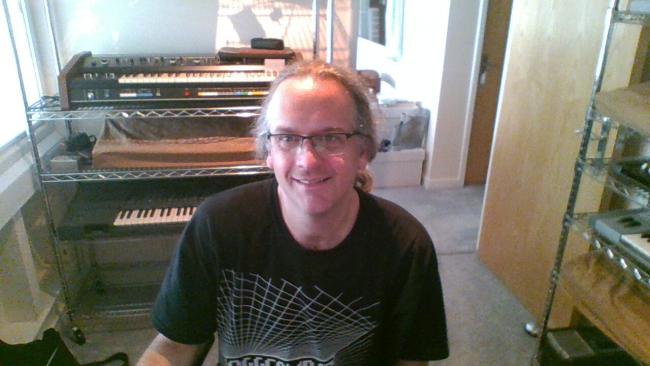
I've been a subscriber for less than one year. It's a brilliant source of news and articles about free software My favorite LJ memory is Doc Searls at #freenode live 2018. My first distro was Ubuntu Gutsy Gibbon.
Jeff Sharpe

I've subscribed on and off for 20 years (or so)—off the shelf as often as a subscription. Early on I subscribed because of a broad desire to devour all things GNU/Linux. Later it was more informative. Overall, though, I think it was the sense of community by reading your journal that proved its best draw.
My favorite LJ memory: I read an article that Jon 'Maddog' Hall, while working at Digital Equipment Corporation, was donating hardware to Linus Torvalds (and team) to help get the kernel ported to Alpha. That exited me to no end (for some reason).
I started with Yggdrasil Linux Oct/Nov 1995, but it was Slackware that I must have installed dozens and dozens of times before I settled eventually on Debian for the next decade.
In the mid-90s I was a database developer and administrator, working on (primarily) Digital and Sun server hardware (there was some mainframe work in there, but I try to forget that part of my life). First thing we did was install GNU tools. The Un*x reality seemed like a dark-dirty subculture of the IT world (to this junior geek)—one that drew my interest. Multi-threading, stability, multi-user—it had things that barely (or didn't) work on Windows desktops or even some Un*x servers (of the time). The first time I saw X run was in the basement of a friend, on a AIX box—it took my breath away. I was planning to try out Minix OS when a peer suggested I look at GNU/Linux instead. I would like to say it was a smooth adoption, but it wasn't—dozens of distros, new terminology, unfamiliar environments, frustrating configurations—I loved it. It was like porn or a drug to me. I learned a lot, and I look back on that time with much fondness. It was the beginning of a long journey.
Andrew Piziali

I've subscribed for 25 years, since the first issue to stay abreast of Linux. My favorite memory is receiving my first issue of LJ and realizing that this open-source Unix was really going somewhere! I deployed Linux workstations to replace Sun workstations at Texas Instruments at that time, saving thousands of dollars. I was also characterizing the Intel Pentium microprocessor, assisting Linus with details of Linux TLB handling. Fun times! First distro was Soft Landing Systems (SLS).
Nick Ivanov

I've been a subscriber for about one year. There are two main reasons why I am a subscriber of Linux Journal. First, I am a digital freedom supporter. When I learned that WikiLeaks revealed that the LJ subscribers were profiled, I immediately became one. I was born in the Soviet Union and grew up in a society severely damaged by the lack of privacy, profiling, censorship, the absence of freedom, and constant monitoring by the government (through your own neighbors, who were also scared). My parents and grandparents have always been afraid of expressing their opinion or "doing something wrong" because they constantly experienced the "watchful eye" of the oppressing government. Being raised in this toxic environment, I promised to myself to never be afraid of being who I am, expressing my opinion, and decide for myself what to do and what to read. I am a crypto-punk, but not a digital anarchist. Although I would have never done what Snowden or Manning did, I strongly believe that freedom and privacy are superior to national security or corporate interests. I believe that freedom and privacy, in the long-term perspective, are the main contributors to secure government and thriving businesses. As a person born in the USSR, I also witnessed the deteriorating power of internal espionage, profiling, privacy violation, censorship and freedom of speech. It was not Snowden who undermined the national security of the United States. It was the NSA who did it! The editorial opinion of Linux Journal seems to be close to mine, so this is the first reason why I subscribed.
Second, I saw the word BLOCKCHAIN on the cover of one of the issues of LJ. I am a graduate PhD student researching blockchain, and I hoard all beyond-hype information about blockchain. Also, I am a full-time desktop Linux user, so I determined that LJ could be helpful for my research or optimization of my workflow as a Linux user.
My favorite LJ memory: I liked the series of articles about ncurses programming. I always wanted to learn it, but existing tutorials looked too time-consuming for me.
My first distro was Mandrake Linux 7.0 on four CD disks with kernel 2.2.14-15. (Jeez, I still remember the version of my first kernel!) I immediately fell in love with it, and I am still in love with Linux.
Jorge Kobeh
I think I've subscribed for 15 years or so.
I subscribe because I use Linux every day, in the servers I manage and in my personal desktop and laptop computers, and I like to know what's going on with Linux development.
I have learned a lot of new things reading LJ, and I have helped friends sharing some articles about open source apps, including ones that work also in other OSes.
I am a good friend of Miguel de Icaza, and he sent me maybe 10 or 12 diskettes with Linux and helped me over the phone to install it (version 0.x). After that, I think I bought the Yggdrasil distribution. Later I switched to Red Hat, then to Debian, and right now, I use CentOS on the servers, and after a couple years of using Mint, I'm back using Ubuntu Mate on my personal computers, including a couple Mac computers.
Thanks for a great magazine and congratulations on your first 25 years.
Dirk Szameitat
I'm really glad for your 25th anniversary and looking forward to the next 25! While I'm a LJ newbie, I've used Linux for quite some time. I've been a subscriber for around one year. I subscribe because I really love Linux, and I find it very important to support a publication covering this topic. Besides that, LJ provides a good addition to the German Linux Magazin, which I subscribe to as well.
My favorite LJ memory is reading the first issue after I subscribed and discovering that Glyn Moody is an author, as I loved the Rebel Code book from him.
My first distro? That would be S.u.S.E 4.2 in 1996.









